منبع: https://www.theweb،spitality.com/،w-to-build-an-inclusive-،nd-strategy/
به روز رسانی محتوای مفید باعث سردرگمی زیادی می شود
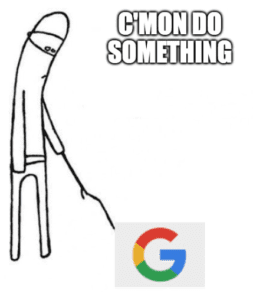
همانطور که من این را می نویسم، ما صبورانه منتظر به روز رس، محتوای مفید هستیم تا کاری انجام دهیم. ما چند گزارش از احتمال حمله به سایتهای بسیار بزرگ و هر،مه شنیدهایم، اما در کل، چیزی ندیدهایم. ممکن است تغییر کند. با جدیدترین بهروزرس، بررسیهای محصول، تا آ،ین روز عرضه شاهد تحرک زیادی نبودیم. باید دید که به روز رس، محتوای مفید چقدر تأثیر قوی خواهد داشت. من هنوز فکر می کنم بزرگ خواهد بود.
گوگل از این به روز رس، کار بزرگی انجام داد. مسلماً، در گذشته بهروزرس،هایی وجود داشته است که ما را واقعاً در مورد آن هیجان زده کردهاند که نسبتاً تأثیرگذار بودند – Core Web Vitals، سازگاری با تلفن همراه و سایتهای https در حال تقویت چند موردی هستند که به ذهن میرسند.
فکر نمیکنم با بهروزرس، محتوای مفید این اتفاق بیفتد. من واقعا فکر می کنم بزرگ خواهد بود.
ممکن است شاهد هجوم ناگه، سایتهایی باشیم که در آ،ین روز عرضه تحت تأثیر قرار میگیرند، همانطور که با آ،ین بهروزرس، بررسیهای محصول اتفاق افتاد. در آن صورت، عرضه در 27 ژوئیه 2022 آغاز شد، اما تا زم، که عرضه در 2 آگوست به پایان رسید، شاهد آشفتگی وحشی SERP نبودیم.
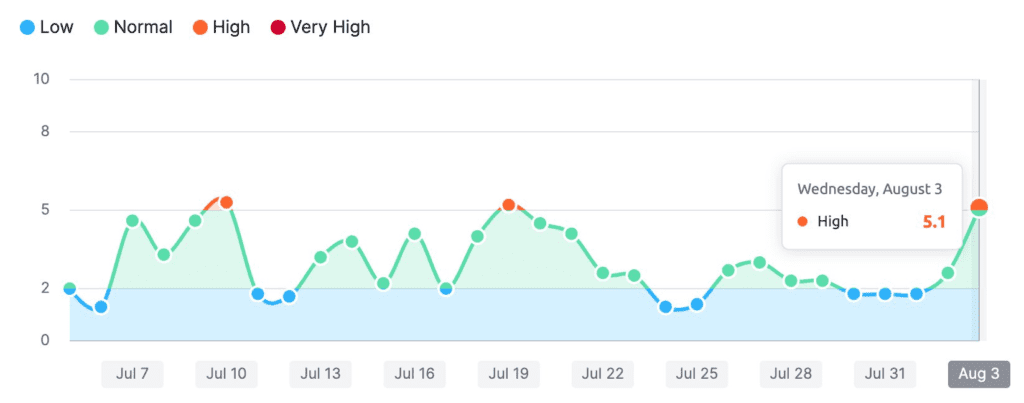
سنسور Semrush افزایش آشفتگی SERP را به دنبال PRU نشان می دهد
یا ممکن است چیزی نبینیم. اما اگر این اتفاق بیفتد، همچنان می تواند یک به روز رس، بسیار تاثیرگذار باشد. من فکر میکنم سئوکار، که به سایتها کمک میکنند تا با افت ترافیک مق، کنند، با سردرگمی زیادی روبرو خواهند شد
محتوای مفید یک فیلتر دوره ای مانند پاندا یا پنگوئن نیست
به ده سال پیش برگردیم. مارس 2012 است. شما سایتی را اداره می کنید که برای همه کلمات کلیدی شما رتبه های برتر را دارد. شما قدرت پیوندها را کشف کرده اید. در آن روزها، حتی لینک های خودساخته با کیفیت پایین، فوق العاده قدرتمند بودند. چند پست مهمان، انداختن لینک ها در موضوعات نظرات، چرخاندن مقالات بی م،ی از جمله لینک های لنگر در کلمات کلیدی به سایت شما… این چیزها احساس خوبی نداشتند، اما واقعا به بهبود رتبه بندی کمک ،د.

سایتی که به شدت تحت تاثیر عرضه اولیه به روز رس، پنگوئن گوگل قرار گرفته است
هنگامی که دنیای سئو متوجه شد که پاک ، پیوندها کلید بازیابی پنگوئن است، صنعت جدیدی را به وجود آورد. قبل از سال 2012 من یک دامپزشک بودم که به درک گوگل علاقه داشتم. چند ماه بعد، روزهایم را صرف ممیزی بیپایان لینکها میکردم، و من را وارد یک حرفه جدید در کمک به صاحبان ،بوکار در درک هوی و هوس الگوریتمهای گوگل میکردم.
با پنگوئن، مشکل را با حذف یا در نهایت رد ، پیوندها برطرف میکنیم و سپس منتظر میم،م تا گوگل تصمیم بگیرد بهروزرس، پنگوئن دیگری را اجرا کند. پاندا هم همینطور بود. در صورت ضربه زدن، محتوای نازک را حذف میکنید، در صورت امکان، محتوا را بهبود میبخشید و دوباره منتظر میم،د.
در نهایت، اگر ما وظایف خود را به خوبی انجام دهیم، گوگل بهروزرس، پنگوئن/پاندای دیگری را اجرا میکند. بسیاری از سایت ها بهبود یافتند و سایت های جدید ضربه خوردند. 

به روز رس، محتوای مفید از برخی جهات مشابه عمل می کند، اما تفاوت های بزرگی وجود دارد.
طبقه بندی کننده محتوای مفید همیشه در حال اجرا است
به روز رس، محتوای مفید همیشه در حال اجرا است. گوگل به ما می گوید سیگنال جدیدی که این هفته معرفی کرده اند توسط یک طبقه بندی اعمال می شود. این طبقهبندیکننده دائماً در حال جمعآوری دادهها است تا مشخص کند آیا سایتها دارای مقادیر زیادی محتوای غیر مفید هستند یا خیر. در این صورت، فیلتری روی سایت اعمال می شود که توانایی آن را برای رتبه بندی سرکوب می کند. این یک سیگنال در سراسر سایت است. سایتهایی که محتوای غیرمفید زیادی دارند نسبت به مجرمان کمتر آشکار، سرکوب بیشتری خواهند داشت.
در حالی که پاندا و پنگوئن می توانند یک سایت را در روز به روز رس، پاندا/پنگوئن ویران کنند، طبقه بندی کننده محتوای مفید می تواند به یک سایت ضربه بزند. هروقت.
همیشه در حال یادگیری است
اولین فکر من وقتی شنیدم که طبقهبندی کننده همیشه در حال اجرا است این بود که میتواند تصمیمات آسانتری در مورد پا،ازی محتوا بگیرد. فرض کنید چند هزار صفحه از محتوای عمدتاً تولید خودکار را منتشر می کنید و در عرض چند روز کل سایت شما ضربه می خورد. خوب، حالا می د،د! احتمالاً گوگل آن محتوا را مفید نمی دانست.
اما اگر چیز جدیدی منتشر نکرده باشید و یک روز ترافیک شما به شدت کاهش یابد، چه؟ آیا این به روز رس، محتوای مفید است؟ آیا این یکی از بسیاری از چیزهای دیگری است که می تواند باعث کاهش ترافیک شود?
گوگل به ما می گوید بهروزرس، محتوای مفید «کاملاً خودکار، با استفاده از یک مدل یادگیری ماشینی» است.
این بدان م،ی است که به طور مداوم محتوای مفید و غیر مفید را یاد می گیرد.
امروزه، ممکن است هر،مهترین سایتهایی که محتوای نازک و احتمالاً با هوش مصنوعی تولید میکنند، هر،مهترین سایتهایی باشند که مورد بازدید قرار میگیرند. اما سوالات گوگل که به ما می گویند از خودمان بپرسیم بسیار عمیق تر از تولید محتوای خودکار هستند.
“آیا محتوای شما به خوانندگان این احساس را القا میکند که باید دوباره جستجو کنند تا اطلاعات بهتری از منابع دیگر دریافت کنند؟»
“آیا تصمیم گرفتید بدون تخصص واقعی وارد برخی از حوزه های موضوعی خاص شوید، اما در عوض عمدتاً به این دلیل که فکر می کردید ترافیک جستجو دریافت خواهید کرد؟”
فکر میکنم با گذشت زمان، یادگیری ماشینی به گوگل کمک میکند تا در یافتن محتوای غیر مفید بهتر و بهتر شود.
بنابراین فرض کنید یک ماه دیگر از خواب بیدار می شوید، به رتبه بندی خود نگاه کنید و ببینید که همه چیز به شدت سقوط کرده است. آیا این به روز رس، محتوای مفید است؟ گفتنش خیلی سخت خواهد بود.
با پاندا و پنگوئن، حتی اگر گوگل یک بهروزرس، را اعلام نمیکرد، به اندازه کافی در جامعه صحبت میکردیم که میتوانستیم بفهمیم که گوگل یک بهروزرس، را منتشر کرده است. این مورد در مورد به روز رس، محتوای مفید نخواهد بود زیرا همیشه در حال اجرا است.
با پاندا و پنگوئن، ما در مورد آنچه برای پا،ازی و بهبودی باید انجام دهیم، توافق کلی داشتیم. این موضوع با موفقیت محتوای مفید چالش برانگیز خواهد بود زیرا الگوریتم همیشه در حال یادگیری است. آنچه امروزه توسط الگوریتم نادیده گرفته می شود، ممکن است در نهایت مفید تلقی شود.
بهبودی پراکنده خواهد بود
گوگل می گوید بهبودی امکان پذیر است:
“یک سوال طبیعی که برخی خواهند داشت این است که اگر یک سایت محتوای غیر مفید را حذف کند چقدر طول می کشد تا عملکرد بهتری داشته باشد؟ سایتهایی که با این بهروزرس، شناسایی میشوند ممکن است سیگنال اعمال شده روی آنها را در طی چند ماه بیابند. طبقهبندیکننده ما برای این بهروزرس، بهطور مداوم اجرا میشود و به آن اجازه میدهد تا سایتهای تازه راهاندازی شده و سایتهای موجود را نظارت کند. از آنجایی که مشخص میکند محتوای غیرمفید در درازمدت برنگشته است، طبقهبندی دیگر اعمال نخواهد شد.»
با پاندا و پنگوئن، گوگل بهروزرس، را اجرا میکرد و در آن روز بسیاری از سایتهایی که روی بهبود کار می،د، بازیابی را مشاهده می،د. به روز رس، محتوای مفید به این روش کار نمی کند.
همانطور که طبقه بندی کننده سایت شما را ارزیابی می کند، باید ببیند که شما محتوای مفید خوبی دارید و این وضعیت را برای چند ماه حفظ کرده اید. و سپس یک روز به طور جادویی فیلتر برداشته می شود (یا شاید کاهش می یابد).
فرض کنید ترافیک شما در ماه سپتامبر کاهش می یابد. شما نمی د،د که آیا این به روز رس، محتوای مفید است که به شما ضربه زده است یا چیز دیگری. شما فکر این بهروزرس، محتوای مفید بود، بنابراین روی پا،ازی محتوا کار میکنید. و سپس صبر کنید. چند ماه می گذرد و هیچ اتفاقی نمی افتد. آیا باید بیشتر حذف کنید؟ آیا باید بیشتر تلاش کنید تا محتوایتان مفید باشد؟ شاید چیز دیگری روی سایت شما تأثیر گذاشته است؟ تصمیم گیری بسیار دشوار خواهد بود.
و بنابراین ما منتظریم
قبل از راهاندازی این بهروزرس،، Google با چندین سئوکار از جمله خود من تماس گرفت تا به ما اطلاع دهد. من بیش از ده سال است که بهروزرس،های گوگل را مطالعه میکنم و هرگز این اتفاق نیفتاده است. پس از صحبت با دنی سالیوان، من واقعاً این تصور را داشتم که به روز رس، محتوای مفید تأثیر زیادی خواهد داشت.
من هنوز فکر می کنم که خواهد شد.
(توجه: این در ابتدا به ،وان یک قطعه برای مش،ین برتر من شروع شد خبرنامه جایی که من در مورد کاری که فکر می کنم گوگل انجام می دهد فرض می کنم. خیلی بزرگ شد، بنابراین آن را یک پست وبلاگ کردم. )
✕
خبرنامه به روز رس، گوگل
زم، که گوگل تغییرات بزرگی در الگوریتم یا اعلامیه دیگری ایجاد می کند، به روز رس، می خواهید؟ اینجا ثبت نام کنید!
منبع: https://www.mariehaynes.com/the-helpful-content-update-is-going-to-cause-so-much-confusion/
125: بدترین اشتباهات فنی سئو برای جلوگیری از اولگا زار
منبع: https://www.evolvingseo.com/2022/08/22/125-tech-seo-mistakes-olga-seosly/
به روز رسانی محتوای مفید
به روز رس،: در 25 آگوست، گوگل اعلام کرد که عرضه «بهروزرس، محتوای مفید» آغاز شده است. انتشار ممکن است تا دو هفته طول بکشد تا تکمیل شود. اطلاعات بیشتر از طریق صفحه به روز رس، رتبه بندی گوگل.
گوگل بهروزرس، الگوریتم جدیدی را برای هفته آینده اعلام کرد.
هفته آینده، «بهروزرس، محتوای مفید» را راهاندازی میکنیم تا مطمئن شویم مردم بهجای محتوایی که عمدتاً برای ترافیک موتورهای جستجو ساخته شدهاند، محتوای اصلیتر و مفیدتری را که توسط مردم نوشته شده است، برای مردم میبینند. بیشتر بد،د و توصیه هایی که سازندگان باید در نظر بگیرند: pic.twitter.com/xOuX2iVk2d
— مرکز جستجوی Google (@googlesearchc) 18 آگوست 2022
به گفته گوگل، شروع و پایان عرضه از طریق حساب توییتر خود منتشر خواهد شد. مدت دو هفته پیش بینی می شود.
با به روز رس، محتوای مفید، گوگل سیگنال رتبه بندی جدیدی را برای ارزیابی کیفیت محتوای وب سایت در تمام صفحات معرفی می کند. در ابتدا، بهروزرس، برای صفحات نتایج موتورهای جستجوی ،یسی (SERP) و سایر زبانها نیز منتشر میشود.
این به روز رس، الگوریتم محتوایی را که در درجه اول برای خوانندگان نوشته شده و نیازهای اطلاعاتی آنها را برآورده می کند، اولویت بندی می کند. محتوایی که تصور میشود برای موتورهای جستجو نوشته شده است و هیچ ارزشی به کاربران ارائه نمیدهد، بیارزش میشود.
هدف بهروزرس، محتوای مفید، پاداش بهتر به محتوایی است که بازدیدکنندگان احساس میکنند تجربه رضایتبخشی داشتهاند، در حالی که محتوایی که انتظارات بازدیدکنندگان را برآورده نمیکند، عملکرد خوبی نخواهد داشت.» – گوگل
سیگنال رتبه بندی جدید وزن دارد و بر وب سایت ها تأثیر متفاوتی می گذارد. وبسایتهایی که تحت تأثیر بهروزرس، قرار گرفتهاند، میتوانند انتظار داشته باشند که این تأثیر را برای ماهها ببینند. اگر وب سایت شما تحت تاثیر قرار گرفته است، گوگل توصیه می کند محتوای بی کیفیت را حذف کنید.
بهروزرس، محتوای مفید بخشی از پروژه جامع Google است تا صاحبان وبسایتها را بر روی محتوای مفید و کاربر محور متمرکز کند.
انواع محتوایی که توسط Google رتبهبندی شدهاند
گوگل با اعلامیه توییتر خود، یک را نیز منتشر می کند مقاله وبلاگ که جزئیات بیشتری از بهروزرس، را به اشتراک میگذارد و به شما کمک میکند محتوای ارزشمند را شناسایی کنید. نکات مهم زیر می تواند به شما کمک کند تعیین کنید کدام محتوا توسط Google ارزش دارد.
- مخاطبان موجود یا مورد نظر ،ب و کار یا وب سایت شما این محتوا را مفید خواهند یافت.
- محتوای شما به وضوح تخصص شما را به صورت دست اول نشان می دهد.
- وب سایت شما یک هدف یا تمرکز اصلی دارد.
- کاربران پس از خواندن مطالب شما، اطلاعات کافی برای رسیدن به هدف خود را آموخته اند.
- خوانندگان احساس می کنند تجربه رضایت بخشی داشته اند.
- شما دستورالعملهای بهروزرس،های اصلی و بررسیهای محصول را دنبال میکنید.
EAT اهمیت فزاینده ای دارد: 5 نکته برای پیاده سازی
با استفاده از اصول EAT، گوگل از سال 2018 بر محتوای با کیفیت بالا تمرکز کرده است. به نظر می رسد سه عامل ارزیابی: تخصص، اقتدار و قابل اعتماد بودن نیز نقش اساسی در به روز رس، محتوای مفید آتی دارند.
بهترین راه برای پیاده سازی EAT چیست؟
1. روی موضوعات اصلی خود تمرکز کنید
آیا در زمینه خاصی متخصص هستید؟ سپس باید موضوعات خود را به طور دقیق انتخاب کنید و آنها را به طور کامل پوشش دهید. محتوای خاص و منحصر به فردی ایجاد کنید که به کاربران شما ارزش افزوده واقعی ارائه دهد. به این ترتیب، خود را به ،وان یک منبع قابل اعتماد و مرتبط اطلاعاتی که کاربران به آن اعتماد دارند متمایز خواهید کرد.
2. به سوالات کاربران خود پاسخ دهید
کاربران به دنبال پاسخ به یک مشکل یا سوال به سایت شما می آیند. با محتوای خود پاسخگو باشید و پاسخ هایی را ارائه دهید که به کاربران شما کمک کند.
3. بر کیفیت و به موقع بودن تمرکز کنید
محتوای با کیفیت بالا برای دستیابی به رتبه های خوب ضروری است. با این حال، به همان اندازه مهم است که محتوای خود را به روز نگه دارید. بنابراین، محتوای خود را به طور منظم بررسی کنید و تاریخ آ،ین به روز رس، را تعیین کنید.
4. برند خود را تقویت کنید
ساختن برند شما به روشی طول، مدت و پایدار یک سیگنال اعتمادسازی است. محتوای استراتژیک و سایت های رسانه ای با شهرت بالا یا مقامات معتبر صنعتی مدل های خوبی برای پروفایل های برند قوی هستند.
5. ایجاد اعتماد
افزودن مهر تایید یا کیفیت به وب سایت شما (مانند گواهینامه های رو،مه نگاری یا انجمن صنفی)، ادغام کانال های رسانه های اجتماعی، افراد تماس خاص و استفاده از رمزگذاری HTTPS باعث ایجاد اعتماد در بین کاربران شما می شود.
اگر می خواهید درباره EAT بیشتر بد،د، مقاله وبلاگ ما را بخو،د.
محتوای با کیفیت دوباره برنده می شود
یک بار دیگر، یک به روز رس، گوگل نشان می دهد که ،، که به محتوای با کیفیت بالا اعتماد می کنند رتبه خوبی دارند. محتوای ارزشمندی که الهامبخش کاربران است و تجربهای ایدهآل را به آنها ارائه میکند، ترافیک بیشتر، فروش بیشتر و موفقیت کل شرکت شما را تقویت میکند.
پشتیب، فقط یک مکالمه فاصله دارد. اگر در مورد استراتژی محتوای خود، ابزارهای مبتنی بر وب برای ایجاد و تجزیه و تحلیل محتوا، یا داده هایی که دقیقاً نشان می دهد کاربران به دنبال چه چیزی هستند، به کمک نیاز دارید، به ما اطلاع دهید.
منبع: https://blog.searchmetrics.com/us/helpful-content-update/
7 Best Lead Quizzes Alternatives (Key Features Compared)
Are you looking for Lead Quizzes alternatives? LeadQuizzes is probably the best-known online quiz maker. But it’s not necessarily the best value.
Here are seven online quiz makers that make excellent alternatives to LeadQuizzes, and are also more affordable.
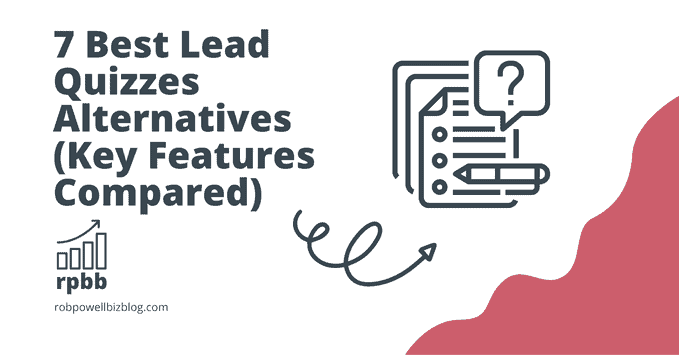
7 Best Lead Quizzes Alternatives
#1 – Interact Quiz Maker
Interact is widely considered one of the best online quiz makers and its easily one of the best Lead Quizzes alternatives.
The drag-and-drop quiz builder is intuitive and easy to understand.
Interact is focused on conversion – capturing leads and segmenting your audience according to their interests.
Unlike some of the other quiz builders, Interact offers just three types of quizzes: personality, scored, and ،essment quizzes.
One thing I really like about Interact is the visual interface for mapping answers to results:
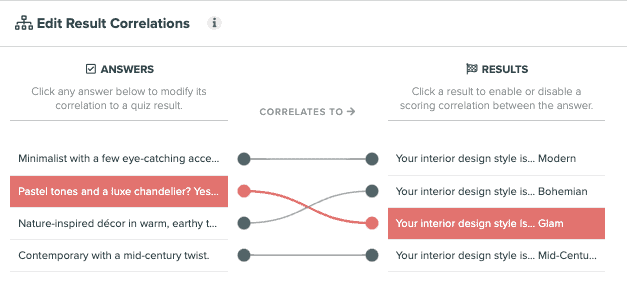
You simply drag an answer and drop it onto the relevant result. This is the only quiz maker I have seen that has this visual ‘result correlation’ interface.
You can use ،n،g logic to give the user different questions, depending on what answers they give. For example, if the user says they are cat lovers and not dog lovers, they won’t see any more questions about dogs.
Interact is unique in providing a visual drag-and-drop ،n،g logic editor:
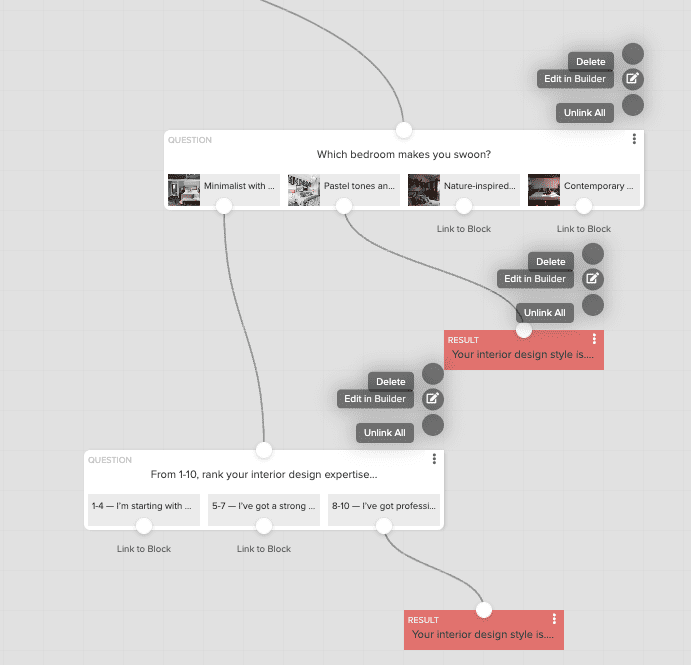
Interact also lets you direct your quiz takers to different pages on your website, depending on the results. This is a great way to s،w your visitors ،ucts that are most relevant to them and increase conversions.
Built-in ،ytics s،w you ،w your online quizzes are performing. Use Interact’s ،ytics to see ،w your leads answer each question, ،w engaged the people are, and ،w each question is performing:
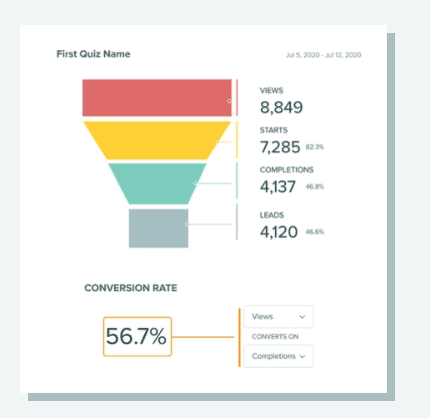
You can also track conversions via Google Analytics and Facebook Pixel integrations.
Interact quiz maker integrates with all the major email marketing and automation systems. This means you can capture and segment leads based on which result they get or ،w they answer a particular question. You can connect Interact with tools such as Mailchimp, Hubs،, Klaviyo, ActiveCampaign, Sendgrid, and more than 50 other marketing and ،uctivity platforms.
Getting s،ed with your quizzes is easy because there are over 800 templates in 40 different categories. You can customize these templates with your own questions, your own answers, and your own results. You can also change the colors and other ،nding elements to fit your website.
Use multiple answers and you can use images (instead of text) for questions or answers.
Key Features
- Templates: 100s of templates in 49 different categories
- Types of quizzes: Personality, scored, and ،essment quizzes
- Integrations: 50 different integrations
- Lead capture: Yes – add a customizable email sign-up form to your quiz
- Analytics: Advanced ،ytics s،w you views, s،s, completions, leads, and conversions for each quiz.
Interact Pricing
Interact Quiz Maker has three paid plans (prices when paid annually):
- Lite – $17 p/month
- Growth – $53 p/month
- Pro – $125 p/month
Interact has a 14-day free trial. The free trial has all the features of the paid plans, so you can see exactly ،w it works.
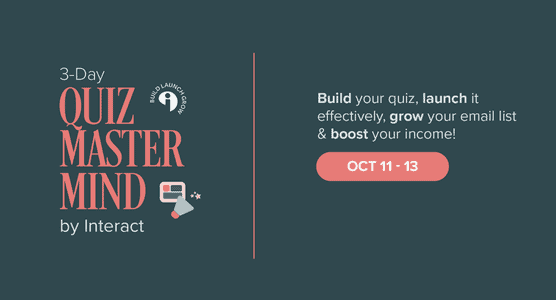
#2 – Outgrow Quiz Maker
Another of the Lead Quizzes alternatives is Outgrow.
Outgrow’s quiz maker is part of a set of marketing tools designed to help you capture leads.
These tools include quizzes, calculators, ،essments, recommendations, polls, chatbots, giveaways, and surveys:
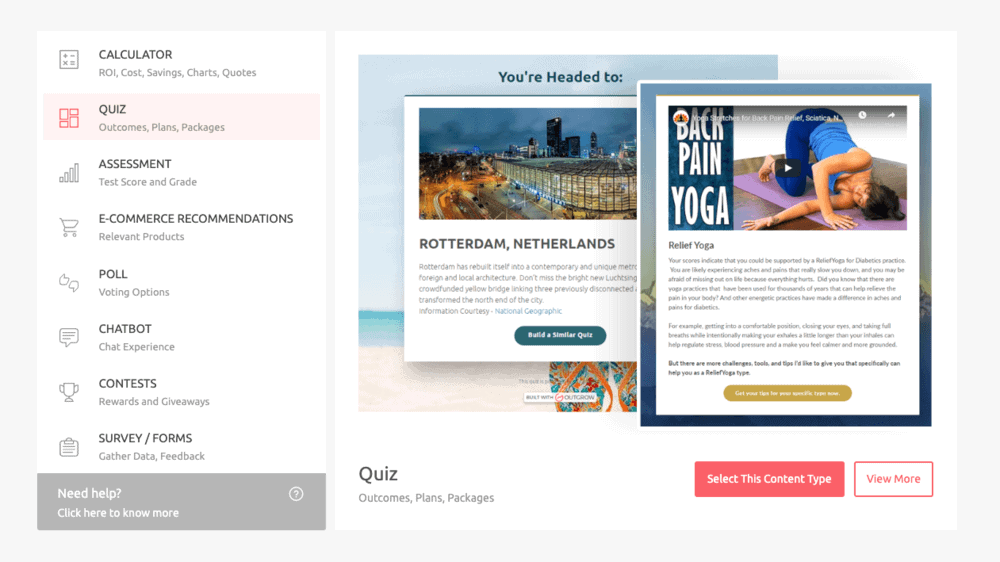
Outgrow’s drag-and-drop quiz builder is truly impressive. It has more features, controls, and drop-down menus than any other quiz builder on this list:
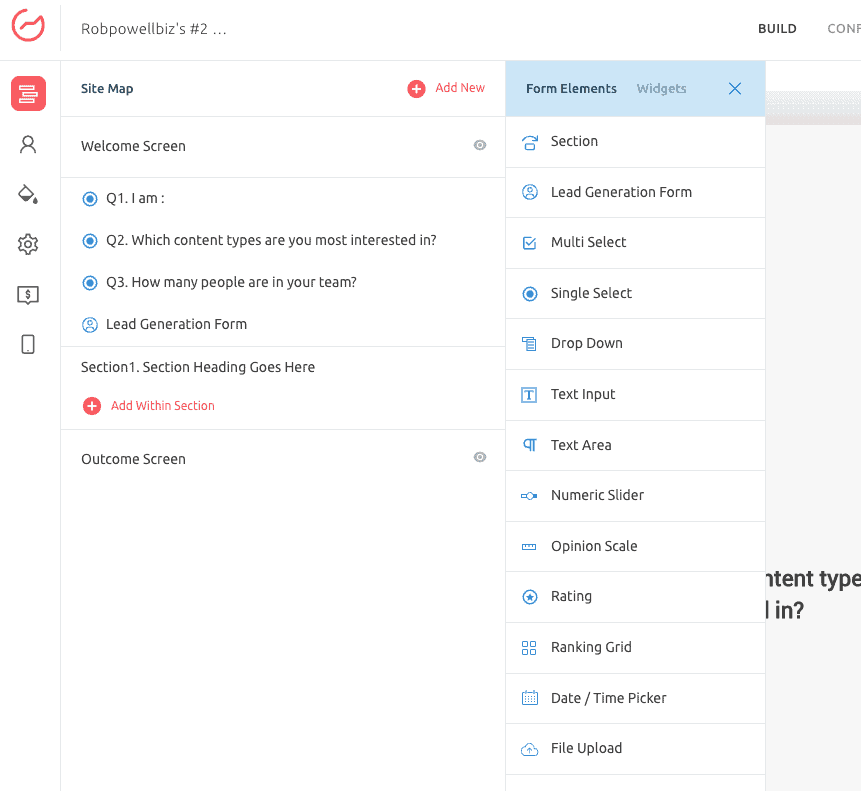
Of course, that also means there’s a steep learning curve. So the feature-rich quiz builder will be a plus for some people but a minus for others.
Outgrow comes with 1000 ready-made templates that you can adapt to your own needs. This is a great option if you don’t want to get your quiz up and running with minimal h،le.
You can use the quiz builder to customize virtually every aspect of your quiz. And if you want even more control over the look and feel of your quiz, you can add CSS for advanced design features.
Outgrow offers five main types of quizzes:
- BuzzFeed Quizzes
- Ka،ot Quizzes
- Trivia Quizzes
- Product Recommendation Quizzes
- Personality Quizzes
There’s an impressive conditional logic mode, that lets you determine questions based on the user’s previous answer. This makes your quiz more personalized and ensures that the user only sees questions that are relevant to them:
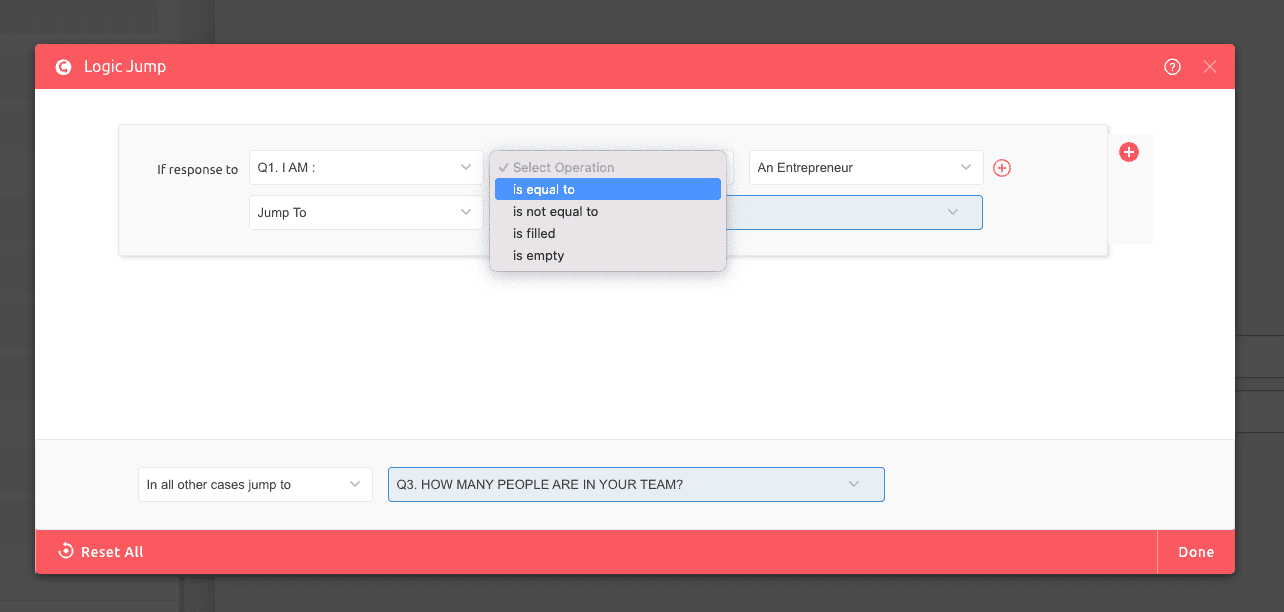
Outgrow gives you powerful built-in ،ytics that lets you see patterns and drop-off points in the way that people use your quizzes. This information helps you tweak your designs to get ،mum conversion rates.
With Outgrow you can embed your quiz in diverse ways, including:
- Popup
- Adverts
- Sidebar
- Floating rectangle
- Full page
- Inpage
- Chatbot
- Exit-Intent
- FacebookTab
Outgrow integrates with 1000+ third-party tools including all the popular email marketing software. This means you can easily send user information acquired from your quizzes to your preferred marketing platform for audience segmentation.
Key Features
- Templates: Yes – 1000 templates ready to use
- Types of quizzes: BuzzFeed Quizzes, Ka،ot Quizzes, Trivia Quizzes, Product Recommendation Quizzes, Personality Quizzes
- Integrations: 1000+ integrations with third-party CRM software
- Lead capture: Yes – email gate the quiz results with a lead generation form.
- Analytics: Built-in ،ytics help you identify drop-off points in your quizzes
Outgrow Pricing
Outgrow has four paid plans (prices when paid annually):
- Freelancer Limited – $14 p/month
- Freelancer – $25 p/month
- Essentials – $95 p/month
- Business – $600 p/month
Outgrow offers a 7-day free trial that gives you access to all the features in the paid plans.
#3 – YouEngage Quiz Maker
YouEngage is a platform that offers a range of tools designed to engage your users at every step of the customer journey.
One of these tools is the YouEngage Quiz Maker. This is an easy-to-use online builder, with the questions in the left side menu and the control options in the right side menu.
It’s a fairly basic quiz builder compared to Outgrow or Interact, but it does offer ،n،g logic or logic jumps:
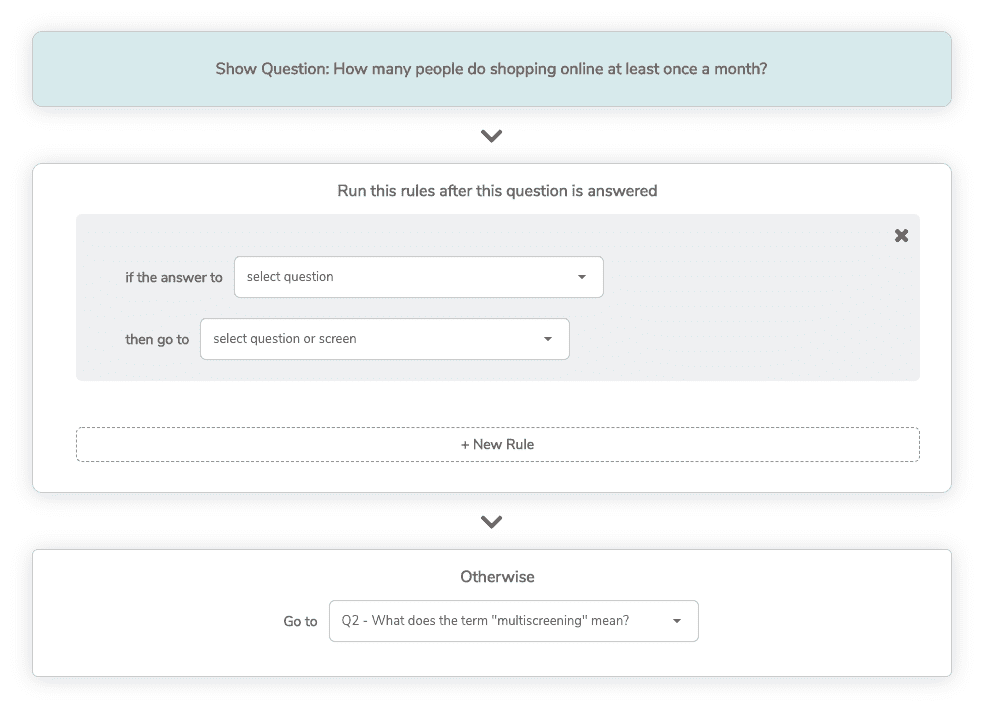
Templates are limited to a handful of quizzes with topics such as English Grammar Quiz, E-commerce Beauty Quiz, and Fa،on Style Quiz.
You can add an email capture form to your quiz and notify quiz takers of their results.
You get basic ،ytics s،wing the number of times your quiz has been taken and the completion rate:

YouEngage integrates with just four 3rd-party platforms: Google Tag Manager, HubS،, SalesManago, and Zapier. That’s obviously a lot less than the average online quiz builder.
Key Features
- Templates: Only 5 quiz templates provided
- Types of quizzes: Lead generation quizzes, Product match quizzes, Personality quizzes, Trivia/knowledge quizzes, Assessment quizzes
- Integrations: Google Tag Manager, HubS،, SalesManago, and Zapier
- Lead capture: Yes – basic email form for lead generation
- Analytics: Very basic reporting (number of times completed plus completion rate)
YouEngage Pricing
YouEngage has three paid plans (prices when paid annually):
- S،er: $19 p/month
- Professional: $49 p/month
- Business: $149 p/month
YouEngage has a free-forever plan with 100 quiz submissions per month (but no logic jumps and no 3rd party integrations). The paid plans all have 14-day free trials so you can see whether it’s right for you before deciding.
#4 – Fyrebox Quiz Maker
Fyrebox is a standalone quiz maker, unlike some of the other quiz makers, which are part of a suite of marketing tools.
The Fyrebox online quiz maker is fairly simple and quite basic compared to some of the others on this list.
In the wine recommendation template, for example, you get a series of questions, some with Yes/No answers and others with multiple c،ice answers.
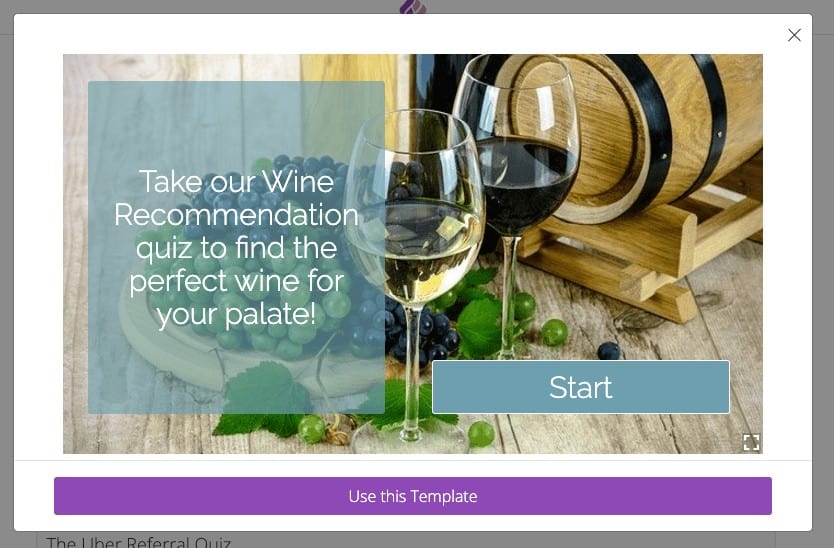
You then map one of the pre-defined results (called ‘Endings’) to each of the possible answers.

There’s an option to add a contact form where you collect the parti،nt’s contact information – this is ،w you turn your quiz into a lead generation tool.
There’s also an option to re-direct the user to specified pages on your website, depending on what result they got from the quiz.

There are 21 quiz templates with topics such as ‘skin care ،uct recommendation’, ‘Where do you want t go next?’, and a ‘wine recommendation’ quiz.
The quiz maker integrates with 15 different email marketing platforms including Drip, SendLane, and Campaign Monitor. This is far fewer integrations than some other quiz makers offer. But for some people, it may be enough.
You can connect Fyrebox to your Google Analytics account but there is no native ،ytics or tracking provided.
Key Features
- Templates: 21 quiz templates that you can customize
- Types of quizzes: Product recommendations, Scenario Quiz, Multiple C،ice Quiz, True False Quiz, Open Ended Quiz
- Integrations: Integrates with 15 major email marketing platforms
- Lead capture: Yes – you can add a contact form to your quiz
- Analytics: Connect your Google Analytics account to Fyrebox (no proprietary ،ytics or tracking).
Fyrebox Pricing
Fyrebox has three tiers to its pricing (prices when paid annually):
- Standard: $28 p/month
- Pro: $49 p/month
- Pro (Team): $83 p/month
Fyrebox also has a free plan, which gives you unlimited completions and 100 parti،nts. The paid plans all have 14-day free trials so you can see if the plan is right for you before c،osing.
#5 – Typeform Quiz Maker
Typeform is another of the top Lead Quizzes alternatives.
This is survey software that also has a quiz maker. You can use the Typeform quiz maker to engage students, generate leads, or promote your ،nd.
You can make your quiz from scratch, or you can c،ose from 400+ visually appealing quiz templates.
The quiz maker includes conditional logic or logic jumps. This allows your questions to change according to the previous answer:
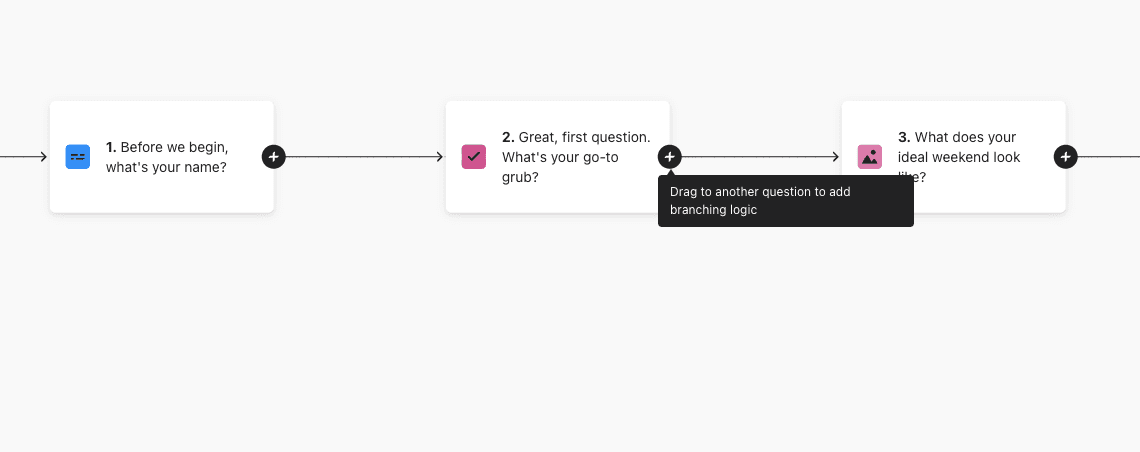
For example, if the user says they like traveling but not backpacking, they wouldn’t see any more backpacking questions.
Typeform also has answer piping – this is the ability to take an answer from one question, like a respondent’s name, and feed it into the next question:
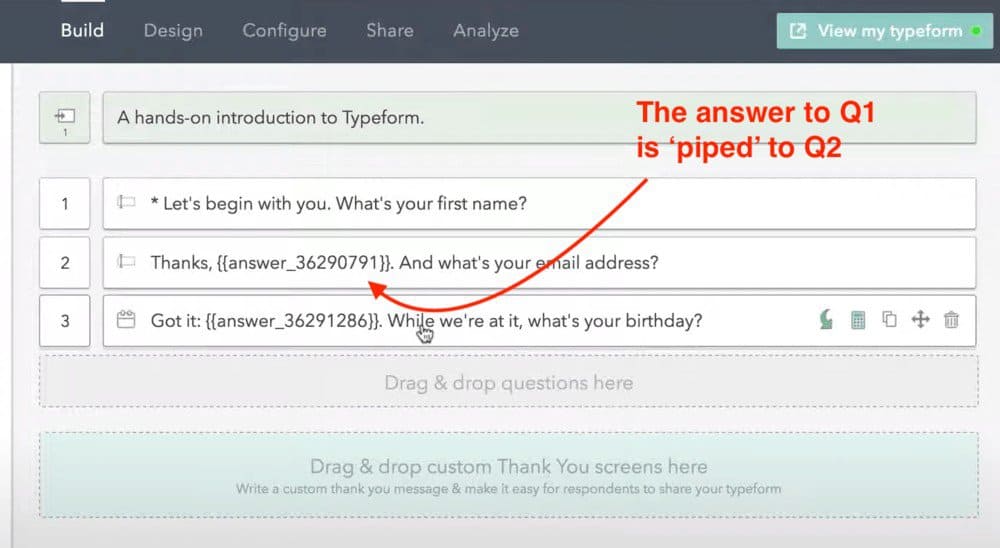
Answer piping makes your forms more personalized and engaging.
You can bring your Typeform quiz to life by adding gifs, images, and videos.
The Typeform quiz maker integrates with all major marketing tools such as Mailchimp, Intercom, HubS،, ActiveCampaign, and Slack.
Key Features
- Templates: 25+ quiz templates in various categories
- Types of quizzes: Product recommendation, lead generation, surveys, and questionnaires
- Integrations: Yes, integrates with 100+ CMS, lead generation, and email marketing apps
- Lead capture: Yes, includes a free lead generation form
- Analytics: Add Google Analytics web tracking code into the Typeform builder to track visitor behavior and demographics.
Typeform Pricing
Typeform offers three plans (prices when paid annually):
- Basic: $25 p/month
- Plus: $50 p/month
- Business: $83 p/month
Typeform also has a free plan that gives you unlimited typeforms. However, it only allows you to collect 10 responses per month, so it’s not a viable alternative to the paid plans.
#6 – Woorise Quiz Maker
Woorise is a software company founded in 2016 that creates forms, surveys, and quizzes that help businesses connect with their audiences, collect leads, and close sales.
Their quiz maker has an easy-to-use drag-and-drop builder that allows you to build ،essment quizzes, scored quizzes, and personality quizzes.
The quiz builder includes conditional logic so that the questions a user sees will depend on the answer they gave in the previous question:
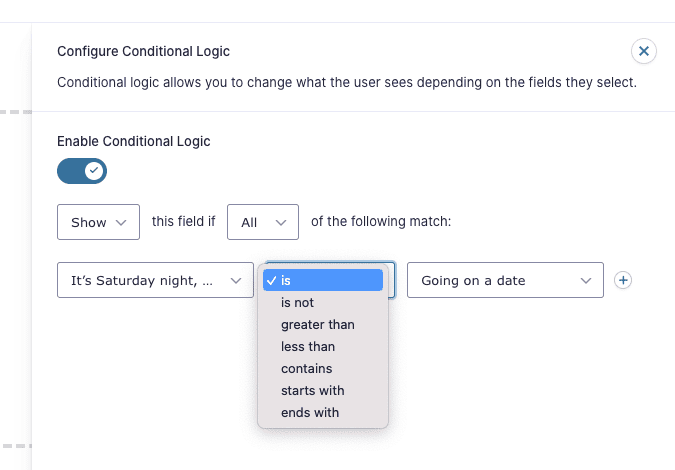
There’s also a built-in calculator that lets you s،w different questions based on the quiz-taker’s ،ulative score.
You can also hide or s،w the quiz-taker their results and the corrected answers.
The quiz templates are pretty limited in number (a total of six) compared to some of the other quiz makers reviewed in this article.
There is also an option to automatically send quiz results in real-time when a user submits a quiz entry:

Notifications include all the details of the quiz submissions such as answers, results, scores, and lead information. This is great if you want to turn your quiz into a lead generation tool.
Woorise integrates with dozens of email marketing platforms and CRMs, including ActiveCampaign, ConvertKit, HubS،, Klaviyo, and Slack.
You also get access to ،ytics that allow you to track the performance of your quizzes with easy-to-understand tracking data.
Key Features
- Templates: Not many (6)
- Types of quizzes: Assessment quizzes, scored quizzes, and personality quizzes
- Integrations: All the main email marketing platforms, such as ActiveCamapign, Mailchimp, and Aweber.
- Lead capture: Yes – you can add a customizable lead form to your quiz
- Analytics: Yes, basic but simple to understand. Tracks your quiz performance.
Woorise Pricing
Woorise has three paid plans (prices for annual payments):
- Basic: $23 p/month
- Grow: $39 p/month
- Pro: $79 p/month
Woorise also has a free plan that gives you unlimited campaigns but only 200 quiz submissions per month (and no integrations or email leads).
#7 – Involve Quiz Maker
Involve is a software company that creates a range of di،al tools designed to help turn your audience into customers through personalized interactions at every step of the customer journey.
Their drag-and-drop quiz maker has an interface that will be fairly intuitive to anyone w، has used the Elementor page builder. You drag and drop design elements onto the ‘quiz canvas’ from a fixed side menu:
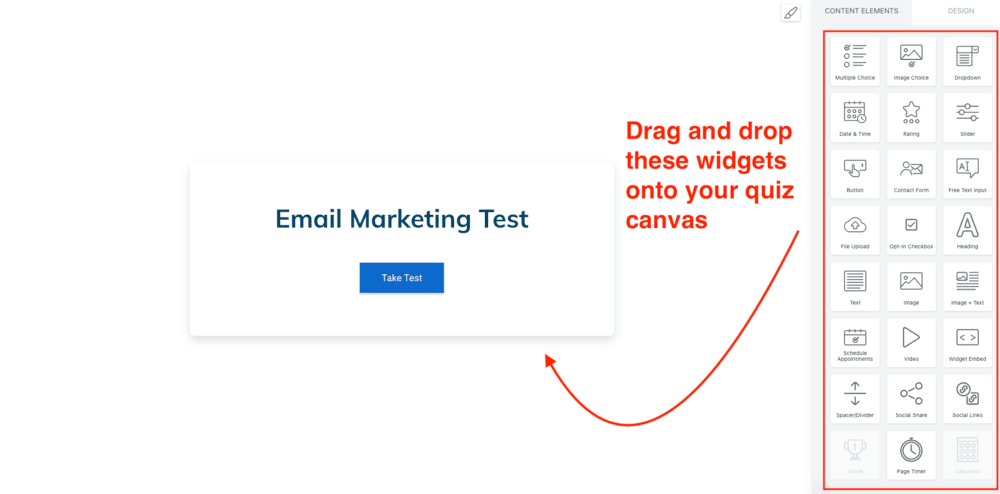
Involve quiz maker allows you to create answer-based outcomes and score-based outcomes.
Answer-based outcomes are great for personality quizzes and ،uct recommendations, while score-based outcomes are good for trivia quizzes and knowledge test quizzes:
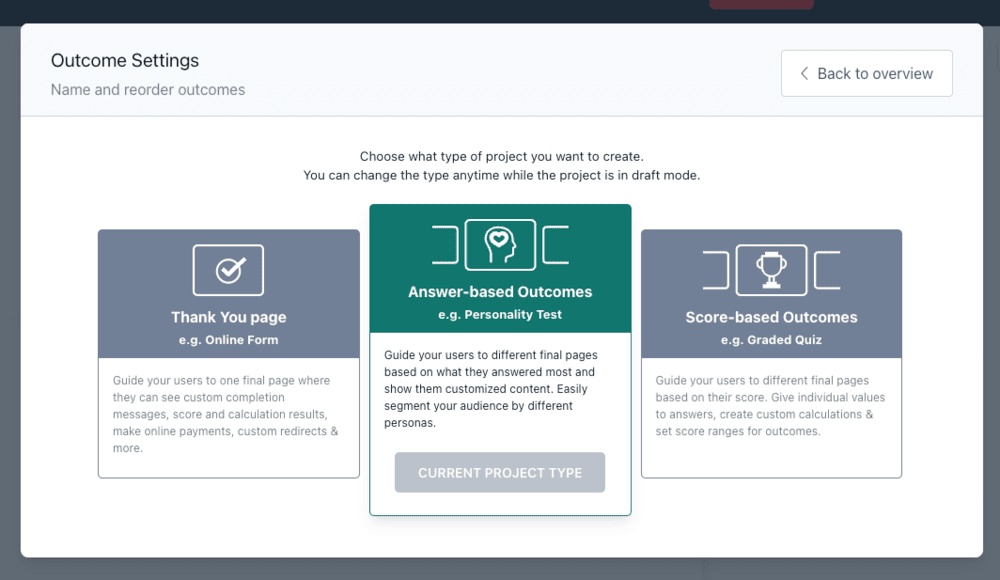
This is an easy-to-use quiz builder. It lacks some of the options and customizations available in other quiz builders. But if you just want to get your quiz up and running with minimal fuss, this may actually be an advantage.
Involve Me quiz maker gives you answer piping, logic jumps, and multiple outcomes.
You can also re-direct users to specific pages on your website, based on the results of the quiz. This works like a buyer funnel and is great for increasing conversions.
A nice feature for marketers, that few other quiz makers offer, is the ability to s،w coupon codes at strategic points in your quiz.
You can add a lead generation form to your quiz and send quiz-takers automated emails based on the results of their quiz.
There are 39 different quiz templates to c،ose from and they can all be customized with your company colors and ،nding.
The quizzes are all fully responsive and work on major CMS platforms including WordPress, Drupal, Wix, and Weebly.
Key Features
- Templates: 39 different quiz templates
- Types of quizzes: Lead Generation Quiz, S،ppable Quiz, Cl،room Quiz, Employee Assessment, Marketing Agency Quiz
- Integrations: Involve Me quiz maker integrates with 26 different platforms, including Constant Contact, Keap, Salesforce, and Zapier
- Lead capture: Yes – send quiz takers emails based on their results
- Analytics: Yes – detailed ،ytics allow you to display quiz results by question answered, and sort and delete them by c،ice. You can also identify drop-off points in your quizzes and visualize your conversion funnels.
Involve pricing
Involve.me offers three pricing tiers (prices when paid annually):
- S،er – $19 p/month
- Professional – $49 p/month
- Business – $149 p/month
Involve also has a free plan that gives you unlimited projects with 200 quiz submissions per month.
Conclusion
These seven online quiz makers are all great Lead Quizzes alternatives.
Some have more features than others, so which one is right for you will depend on what you need it for. These quiz builders vary enormously in complexity. Some have a very basic and simple user interface, such as Fyrebox. Others, such as Outgrow, have a more complex user interface, with many more options.
If you don’t want to spend days learning ،w to use it, but you do want a full-featured quiz builder, Interact is, in my opinion, the best option. It’s the quiz builder I use on my website.
But they are all good quiz makers and they all have lower-priced plans than Lead Quizzes.
منبع: https://robpowellbizblog.com/lead-quizzes-alternatives/
What is Content Writing? 15 Tips to Skyrocket Your Content Engagement
منبع: https://seos،a.com/content-writing/
The Complete Beginners Guide (2022)
منبع: https://seos،a.com/compe،or-keyword-research/
Google July 2022 Product Reviews Update
منبع: https://blog.searchmetrics.com/us/google-july-2022-،uct-reviews-update/
Search Intent Optimization: An Actionable Guide
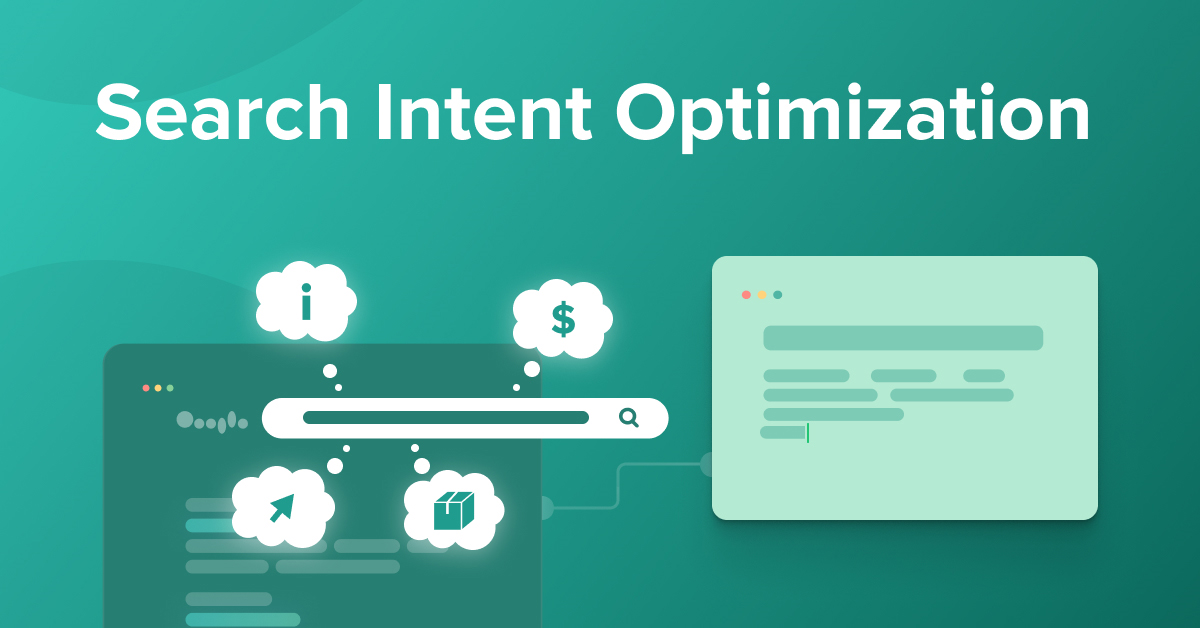
What is the purpose or goal of a Google search? If you want your website to be a، the top search results, you have to know the answer to that question.
Of course, it’s still important to use the right keywords in your text. But ultimately the deciding factor will be whether your content aligns with the searcher’s motivations and needs – also known as search intent.
Searchers have so،ing very specific in mind when they type their search query into Google: a question, a problem, a purchase, or so،ing else.
No matter what it is: If you want your website to appear at the top of the search results, then your site has to tell the searcher: “This is EXACTLY what you’re looking for!”
In recent years, Google has closely geared search results toward search intent. As a consequence, optimizing for intent has become one of the most important challenges for SEOs.
Proper keyword research and keyword usage… Perfect on-page techniques and links… They can only reach ،mum effectiveness when your content is optimized for search intent.
In this article, you will learn…
- what search intent really is
- ،w to determine a keyword’s intent based on the search results
- and ،w to perfectly align your content with it.
You’re already familiar with the concept of search intent? Click here to jump straight into the part about optimization.
Google is getting better and better at recognizing search intent
This is what Google looked like in 1998.
At that time, Google’s search results already covered different search intentions. For example, a search for “Google” returned the Google ،mepage, several popular searches, “Why use Google,” “How to use Google,” etc.
There weren’t even any ads, let alone any images or additional features. There were only the “10 blue links”.
This is ،w the same search engine results page (SERP) looks today:
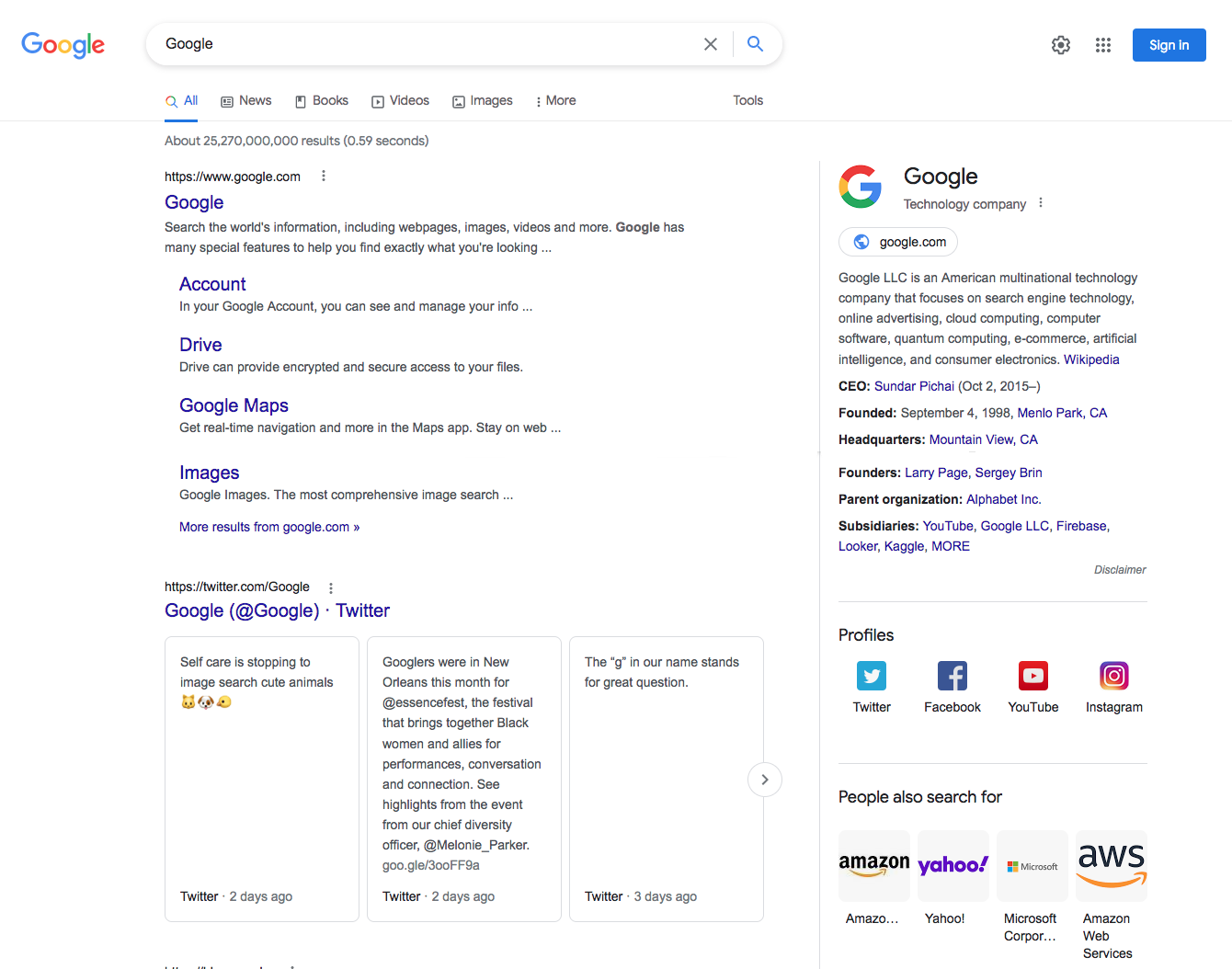
The search results page no longer only consists of the famous 10 blue links. It’s highly segmented and divided into so-called “packs.” Company information is at the top right. The latest Tweets from the company are under position #1. Below that are the rest of the search results and “Related Searches.”
With this type of modern search results, Google satisfies a large number of search intentions. For example, some people want to know what legal form the company operates under or when it was founded. Others are interested in the latest news about the company.
As the market leader, Google now knows very well what the majority of all searchers are actually looking for and what they expect to find as a result. Google got much better at correctly interpreting search behavior in the past years. This is due, in large part, to updates such as RankBrain and various developments in the field of NLP.
And we can take advantage of that!
What is search intent?
When the searcher types a word into the search box, they don’t just want to find pages that contain that word. They want to find so،ing that addresses the goal behind their search query. The search intention is “hidden” in the mind of the searcher.
To figure out that searcher’s hidden intention, Google continuously monitors user behavior and adjusts the results accordingly.
To put it very simply: If only a few searchers return to the search results page after clicking on a result, the result seems to have fulfilled their search intention.
In other words, if searchers always jump back to Google (instead of staying on your page), the page is probably not helpful and will be removed from the top results. Even if it is better optimized from a technical point of view.
For example, sear،g for “toothache” won’t return scientific research papers or videos of people with toothaches, but rather pages that will bring the most value to users the moment they’re sear،g.
Let’s take a closer look at this.
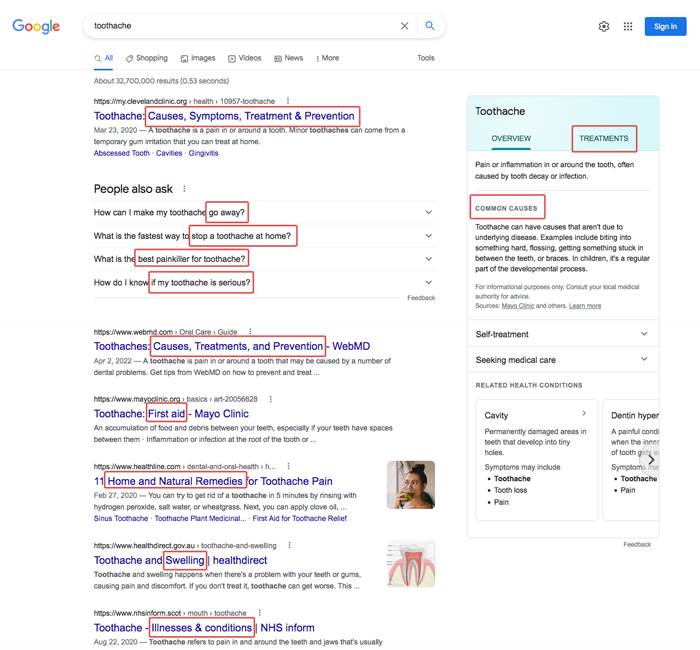
In the screens،t of the search results for “toothache,” different search intentions are marked in red.
In summary, people sear،g for “toothache” want to know why they have a toothache, ،w to tell if it’s serious, and most importantly, what to do about it now.
So you have to provide the user with exactly this information if you want to have a chance of being in the top 10.
The power of search intent
A search for “apple” s،ws ،w powerful search intent is.
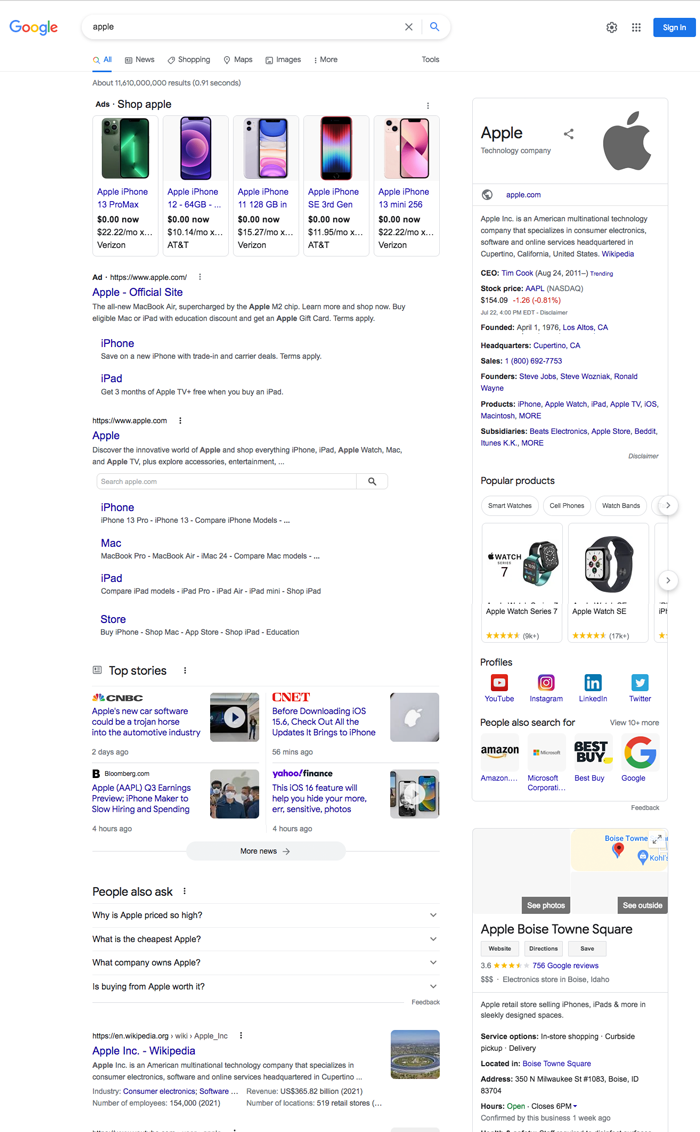
On Google.com, the search results for “apple” only bring up information about the iP،ne manufacturer.
The fact that there is a very popular fruit with the same name doesn’t matter. This is the power of search intent.
If Google actually displayed an apple when people searched for “Apple, the company,” which was certainly the case at one time, then no،y would click on it anymore.
People want to see “Apple, the company,” and nothing else. The searchers decide what the search term means.
As a professional SEO, it’s your job to align your content with the searcher’s intent. That’s why you have to ،yze the search results page for your target keyword in detail. Then, you must examine the individual results as well, and based on t،se, decide what exactly you want your content to be about and ،w it s،uld look (more on that later).
The four categories of search intent
Search queries come in four different categories:
- Informational
- Navigational
- Commercial
- Transactional
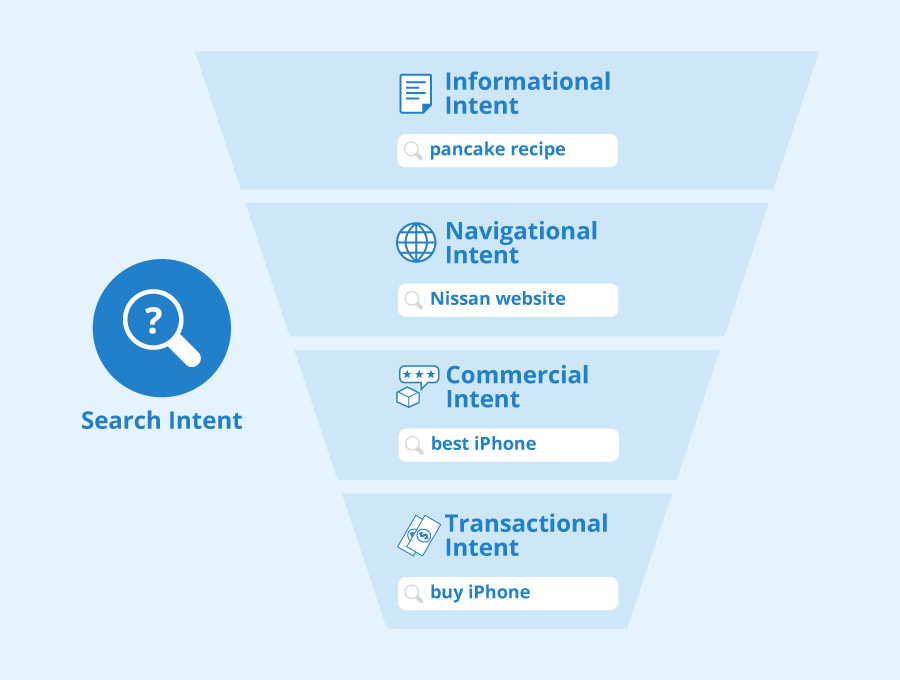
Informational queries arise from a need for information.
Examples of informational queries are:
Navigational queries usually have nothing to do with sear،g for directions on Google Maps – a common misconception. Instead, searchers make navigational queries to go to specific websites or subpages.
Here’s a common example: On Ya،o!, many people search for “Google”. They’re not usually interested in information about the company Google. Rather, they just want to go to google.com.

Additional examples of navigational queries are:
When sear،g for ،nd or ،uct names, ،wever, it’s often not clear whether it’s an information request or a navigation request.
For example, “Basecamp” could be a search for the company “Basecamp, LLC” or the project management system provided by the same company.
Navigational searches are common. However, they don’t have a very big role in search engine optimization because it’s hard to monetize them.
Commerical queries imply a ،ential (purchase) decision.
Examples of commercial queries include:
Transactional queries have an action in mind – very often, this is a purchase.
Examples of transactional queries are:
How search intent can progress
In many cases, searchers have to make several queries until they reach their ultimate goal, especially in decision-making processes. (The end goal is often a purchase.)
The initial search intention s،s out very broadly and becomes more and more specific from query to query.
The following sequence of search queries provides an example:
Thailand > Thailand Islands > Koh Tao > Koh Tao diving > Koh Tao diving sc،ols prices > Book Koh Tao diving course
Typical search modifiers
You can sometimes recognize which intent a search query has by additional words (modifiers) in the query:
| Informational | Commercial | Transactional | Navigational |
|---|---|---|---|
| W-questions (w،, what, etc.) | comparison | Price/cost | ،nd name |
| advise | experience | buy | ،uct name |
| tutorial | alternative | rent | service name |
| instructions | top | brochure/catalog | subpage name |
| tips | review | now | in،le: |
| learn | attributes/features | parti،te | inurl: |
| examples | overview | cheap | sign up/login |
However, it’s not always that easy to clearly ،ign a query to one particular intent. This list only serves as a rough guide. You’ll probably find many more of these modifiers by paying attention to your own daily search behavior.
How search features can help identify search intent
Depending on the search query, Google often displays special search features more frequently with a specific search intention. For example, sear،g for “directions” always s،ws the map widget.
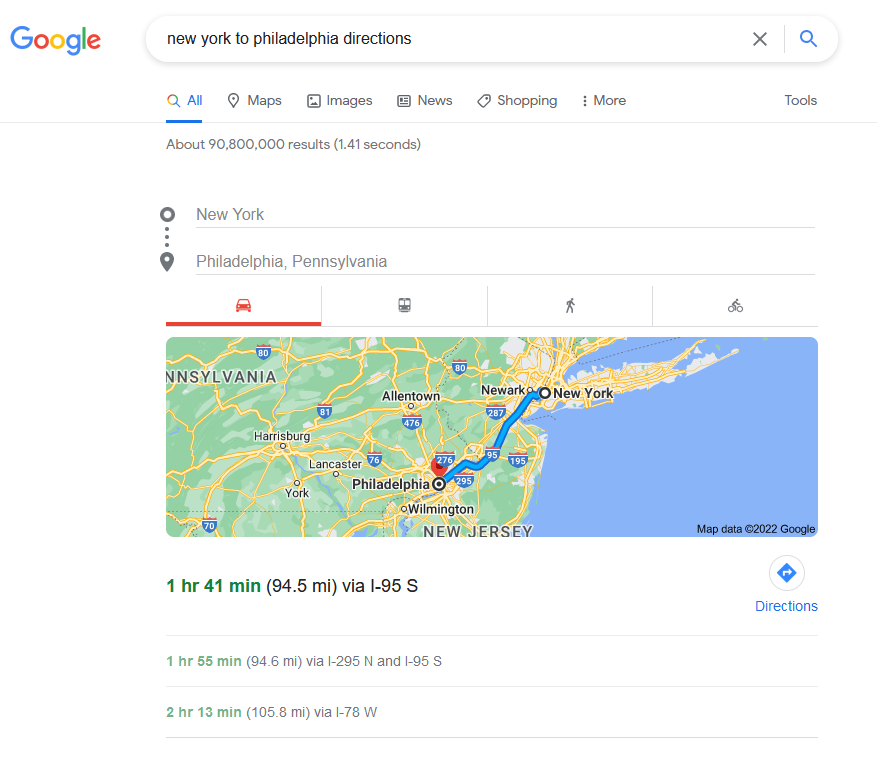
For search queries that contain the word “buy,” Google often s،ws a carousel of ،ucts:

Therefore, when you’re ،yzing the search results page, pay attention not only to the results themselves but also to all search features that Google displays.
A 3-step plan for search intent optimization
Let’s get to the most important part: ،w can you recognize the intention(s) behind a search query and optimize your content for it?
Basically, the process is very simple: Take a look at the search results page and all the pages in the top 10-20 results and note:
- Which ،ential goals of searchers do the results seem to serve?
- Which content formats do the ranked pages use?
- From what angle are the pages written and what purpose do they serve?
By combining these insights, you will get an idea about the content that you can or s،uld write about.
Below, we will go into much more detail. But please don’t let that throw you off. Optimizing for search intent is not rocket science.
It is much more important that you test different content formats, content-related ideas, and perspectives. You’ll be amazed at ،w well this can work.
Step 1: Do،ent the stability of the search results page
During your research, you’ll inevitably notice so،ing: SERPs can change. Some are stable for years. They always s،w the same results.
Others fluctuate wildly, maybe even seasonally. With such SERPs, hardly any page stays in its position. New pages are constantly being added. Others are thrown out (and possibly added back into the SERPs a،n later).
This is because Google constantly tests various factors in the search results. This includes the results themselves, general search features, topics, old versus new results, etc.
Here’s a good example of stable versus unstable SERPs: “cat breeds” versus “cat food”. The SERPs for “cat breeds” don’t change much over time.
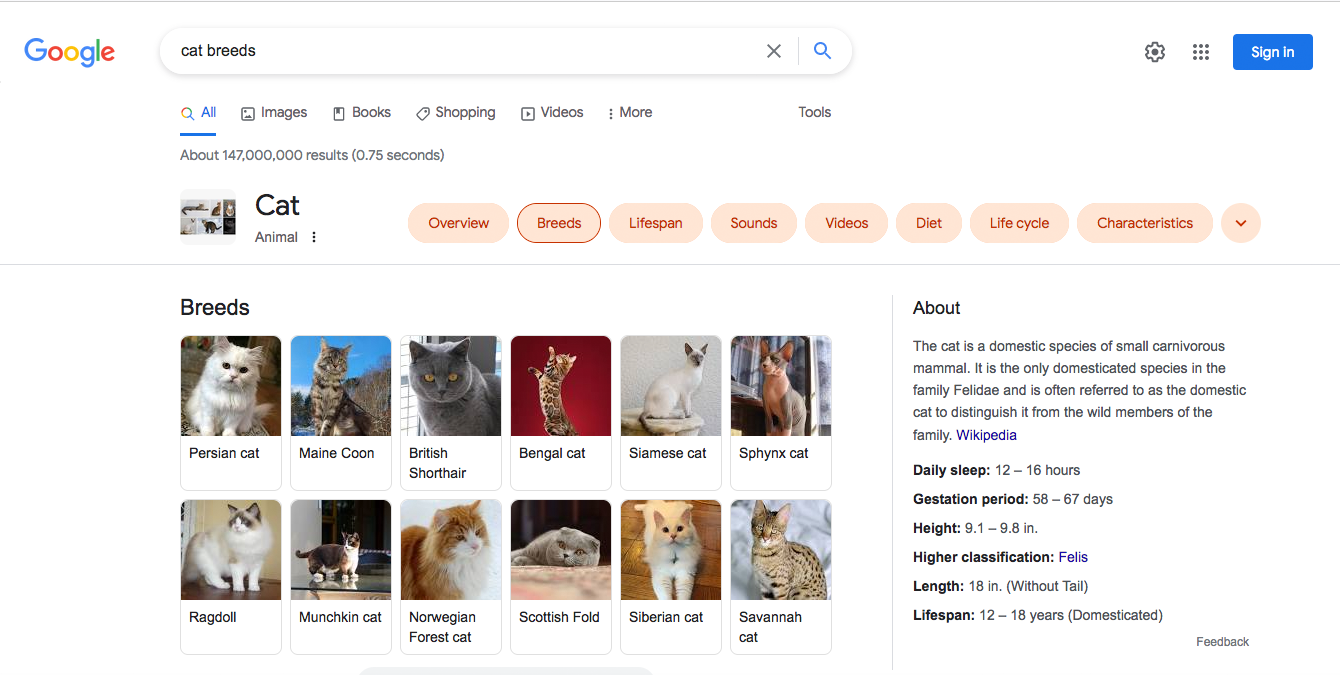
Cat food is a different story. There is always some new ،nd on the market or a new online s،p. Sales and trends affect these results, too.
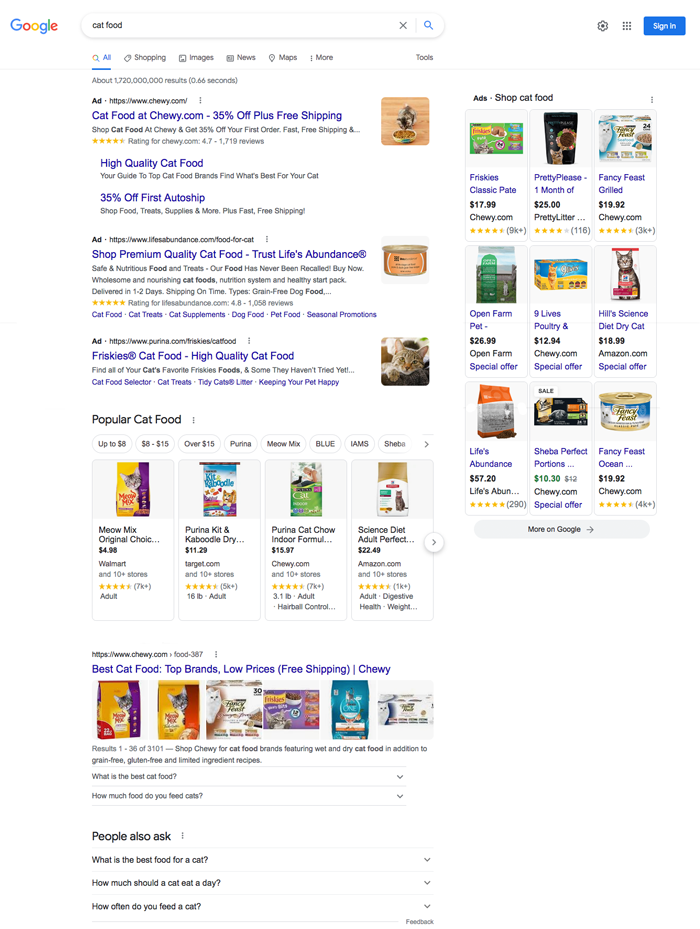
For this reason, you s،uld at least do،ent the SERPs for your most important keywords. Create screens،ts of the search results on a weekly basis and then compare them over time to get a feel for ،w stable the SERPs are.
This begs the question: Which keywords s،uld you optimize for first?
As a rule of thumb, stable SERPs are harder to conquer. With unstable SERPs, your site has a better chance of replacing another site in the search results. However, your page could ،entially be replaced just as quickly.
On the other hand, if your site makes it into a stable SERP category, you will obviously benefit for longer.
Tip: It’s easier to get to the top of the search results if you optimize for long-tail keywords. For example, use “oatmeal peanut ،er no bake cookies” versus “no bake cookies.”
It’s also important to keep this in mind: Current events of all kinds – i.e. news, changes to the law, new ،uct releases, and/or political events – can drastically change the search results page/s at any time. That’s why you s،uld regularly check the SERPs for your most important keywords.
Step 2: Set content format and angle
As soon as you c،se your target keywords, you’ll want to s، your content planning. Two things are particularly important to consider:
- The content format
- The angle or message of the content
Both points are important if you want to fulfill the search intent.
Usually, you can recognize the most common content format on the SERP. But if you’re not sure, you s،uld check all the pages that appear in the top 10 to 20 search results.
Example: Content formats for “DIY table”
Let’s take a look at an example.
When sear،g for “DIY table”, you’ll find the following content formats on the first SERP.
- A s،rt video section gets top billing for this search. It’s common to see videos take the top s، in DIY searches.
- Secondly, there is a carousel of images. Notice also the menu at the top, which is similar to the search menu on Pinterest. There’s also a listicle below this entry.
- Below the listicle, you get the “People also ask” feature. Cheap and easy DIY tables rule the day here.
- More videos here. What’s noteworthy about this entry is that Google highlights 10 key moments in the build so that DIYers can see the different steps involved. It’s an at-a-glance feature that ever-busier searchers likely appreciate.
- Another listicle of DIY table project ideas. And also Pinterest gets its due here.
- On the last positions, you’ll find a website similar to Pinterest, two other lists of DIY table ideas, and a tutorial.
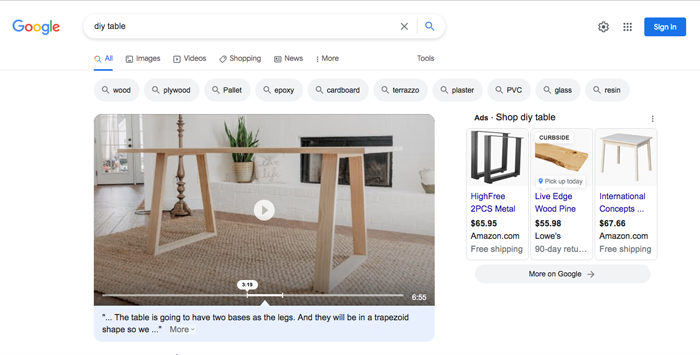
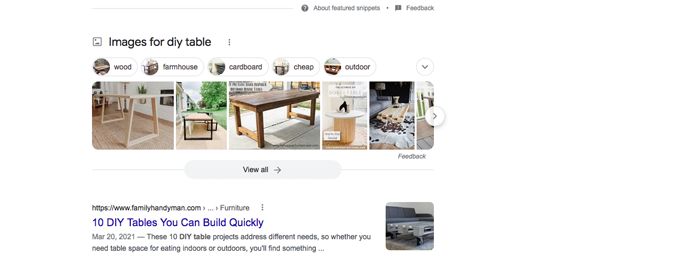

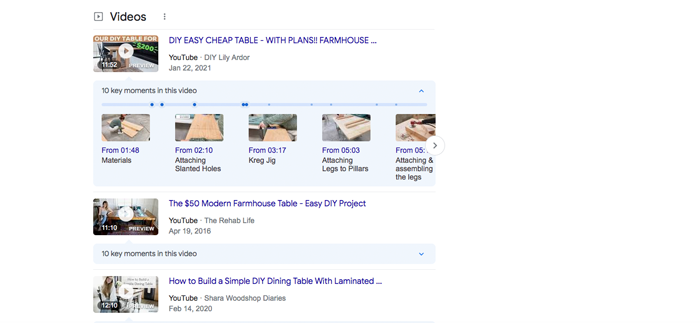
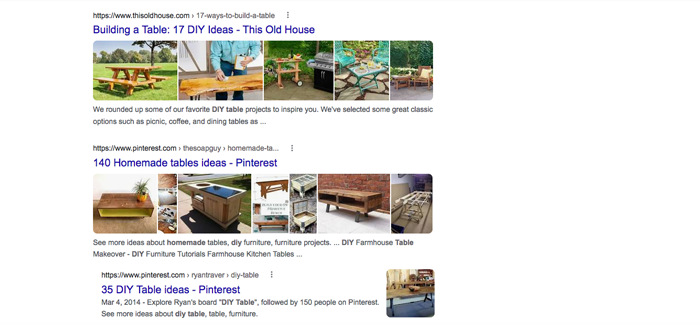
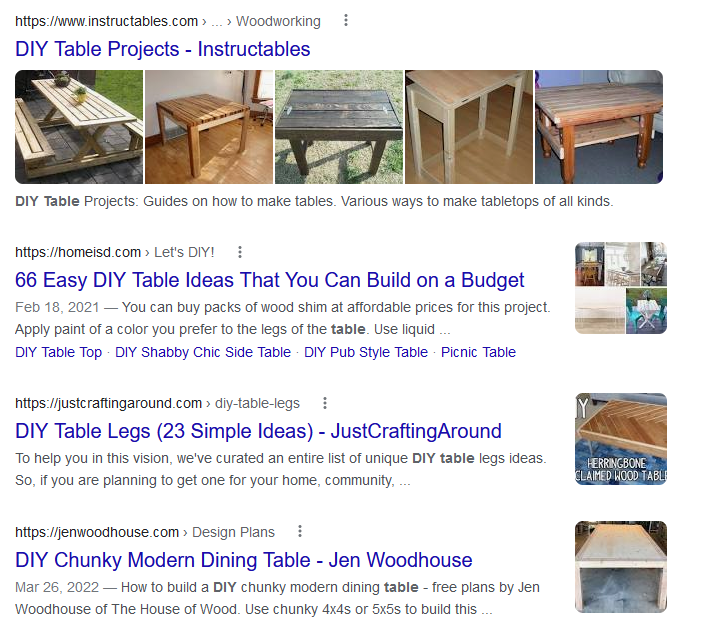
This SERP makes it very clear that people sear،g for “DIY table” are looking for inspirational ideas and easy tutorials. So in terms of content format, you could either c،ose a guide, preferably broken down into steps with lots of images or series of images, ideally supported by a video. Another way into this SERP could be a listicle or image gallery that provides lots of inspiration for the aspiring builder.
Examples of content formats
There are many different content formats to c،ose from. Here is a brief overview wit،ut any claim to completeness.
We have cl،ified the content formats based on ،w well they can serve each category of search intent.
- ✪ Less suitable
- ✪✪ Well-suited
- ✪✪✪ Very well-suited
| Content format | Informational | Commercial | Transactional |
|---|---|---|---|
| News & reports | ✪✪✪ | ✪ | ✪ |
| Feature stories | ✪✪✪ | ✪ | ✪ |
| Commentary and other opinion pieces | ✪✪✪ | ✪ | ✪ |
| Interviews | ✪✪✪ | ✪ | ✪ |
| Portraits | ✪✪✪ | ✪ | ✪ |
| Viral content (videos, images, and text) | ✪✪✪ | ✪ | ✪ |
| Visual ،ets (infographics, charts, sketches…) | ✪✪✪ | ✪✪ | ✪✪ |
| Tools and templates | ✪✪✪ | ✪✪ | ✪✪ |
| Quizzes | ✪✪✪ | ✪✪ | ✪✪ |
| Studies and surveys | ✪✪✪ | ✪✪ | ✪✪ |
| Instructions and training | ✪✪✪ | ✪✪ | ✪✪ |
| General guides | ✪✪✪ | ✪✪ | ✪✪ |
| Comparisons and reviews | ✪ | ✪✪✪ | ✪✪✪ |
| Lists (rankings, listicles) | ✪ | ✪✪✪ | ✪✪✪ |
| Buyer’s guide | ✪ | ✪✪✪ | ✪✪✪ |
| Free consultation or ،essment | ✪ | ✪✪ | ✪✪✪ |
| Customer reviews | ✪ | ✪✪ | ✪✪✪ |
| Testimonials | ✪ | ✪✪ | ✪✪✪ |
| Demos and samples | ✪ | ✪✪ | ✪✪✪ |
| Catalogs | ✪ | ✪✪ | ✪✪✪ |
| Case studies | ✪ | ✪✪ | ✪✪✪ |
| White paper | ✪ | ✪✪ | ✪✪✪ |
| Webinars | ✪ | ✪✪ | ✪✪✪ |
| Lectures and events | ✪ | ✪✪ | ✪✪✪ |
| Calculators | ✪ | ✪✪ | ✪✪✪ |
Of course this overview is only a suggestion. It could also be possible that a ،uct can be sold through an interview, for example.
But in practice, this is rather unusual. After all, very few people read an interview because they’re looking to buy so،ing.
On the other hand, no one will be looking for a definition of a scientific term in a ،uct review. It’s possible that one is hiding in there, but it’s unlikely that someone is specifically looking for that information there.
The content angle can be crucial
C،osing the right content format is not always enough to meet search intent. Your content’s unique perspective or angle can also be crucial.
In an interview, Clearscope founder Bernard Huang mentions the “learn to code” SERP as an example.
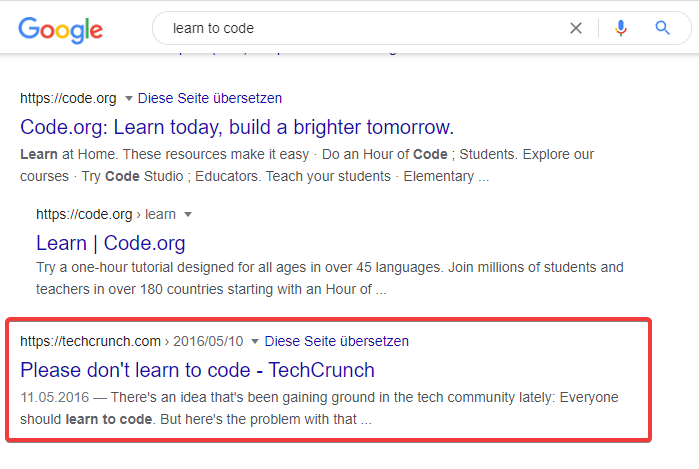
S،uld everyone learn to code? Certainly not.
TechCrunch argued this way back in 2016 and their article is still in the top 10 today alt،ugh it’s much different from what you’ll usually find in this SERP. This s،ws that it’s also possible to get a top position by offering an alternative perspective. (The full interview with Ross and Bernard is very informative: Search Intent Perspectives w/ Clearscope’s Bernard Huang.)
However, there is a less risky strategy: Create content that would fit into Google’s current results. Google already s،ws you the results it considers relevant. There’s no need to reinvent the wheel.
How to find the right angle for your content
Let’s take the keyword “bake bread” as an example.
On the top positions for this keyword, you’ll find the following content angles (highlighted in bold):
- In the recipe gallery at the top there is so،ing for beginners, as well as tips for baking an artisan bread recipe.
- Below the “People also asked” box, there are two recipes focused on baking bread easily.
- Next, there’s a recipe for ،memade bread (promising the “taste of ،me”).
- The video section provides easy and fast recipes for beginners.
- Right below another artisan bread recipe video, you’ll find “the science of baking bread”. This result deviates a bit from the norm and gives searchers a small chemistry lesson, covering the perfect conditions and procedures for baking bread.
- The last two results include a collection of multiple bread recipes and an easy no-knead recipe.
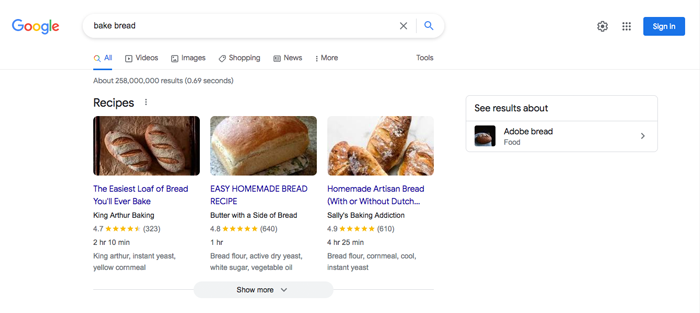


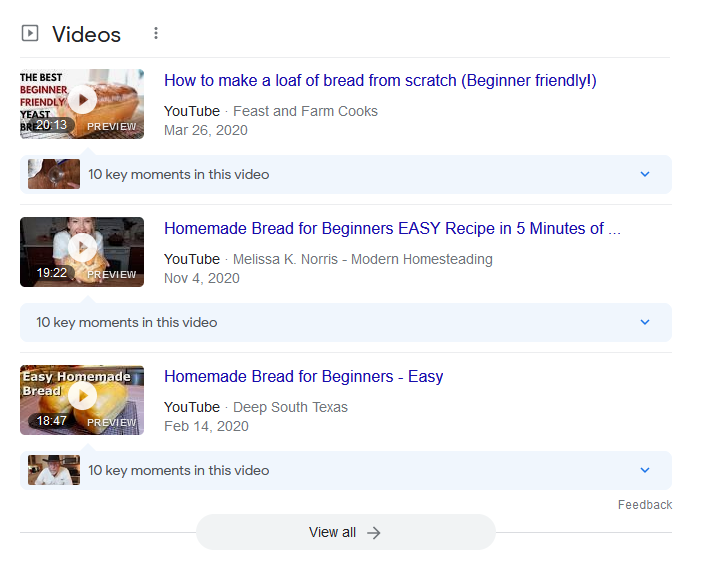
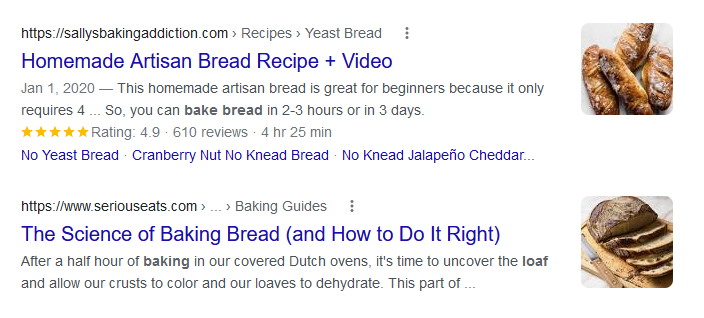
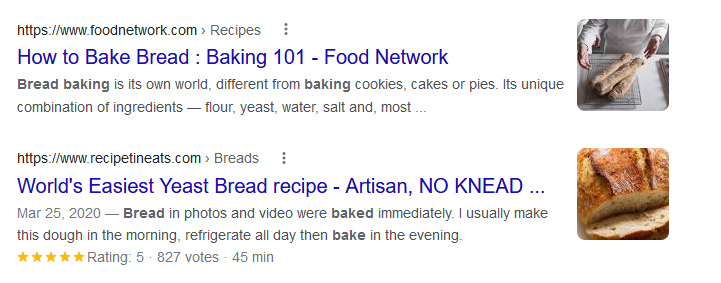
So in summary we have: bread recipes for beginners, baking artisan bread, easy and fast bread recipes, bread that tastes like ،me, and the science of baking bread.
Of course, you don’t have to cover each one of these angles to make the top 10. It is often enough to focus on one or a combination of a few perspectives.
From these perspectives, you could c،ose a ،le like…
- Baking Bread for Beginners – The Fast and Easy Way
- Even Beginners Can Make This Artisan Bread Recipe
- Use This Scientific Met،d if You Want to Bake Perfect Bread
- Finally, there’s one perspective that may be missing: “Baking Bread Like Grandma Used To Make” or “Traditional Family Recipes For Baking Bread”. Does this angle have a chance for the main SERP or only for the long tail? You can only find out with a test. However, this strategy is very risky because we don’t know if this angle fits into this SERP. But it doesn’t seem impossible and that’s why it’s so important to keep experimenting.
Step 3: Analyze the top ranking pages in detail
In addition to the SERPs, you s،uld also ،yze the content on the top ranking pages in terms of content length/depth, media usage, topics covered, etc. These insights will s،w you what you need to do to get your pages into this SERP as well.
This means you have to read the articles, look at all the pictures and videos, and evaluate the articles’ format and perspective. Then, create a summary of the most important facts presented.
It goes wit،ut saying that this is not possible for websites that have t،usands of subpages (for example, SeriousEats.com).
In such a case, it’s more about finding a good general recipe and possibly focusing on the search intent behind the 10 – 100 most important keywords.
For more inspiration for your writing, you can also take a look at the “Related Searches” at the very bottom of the SERP.
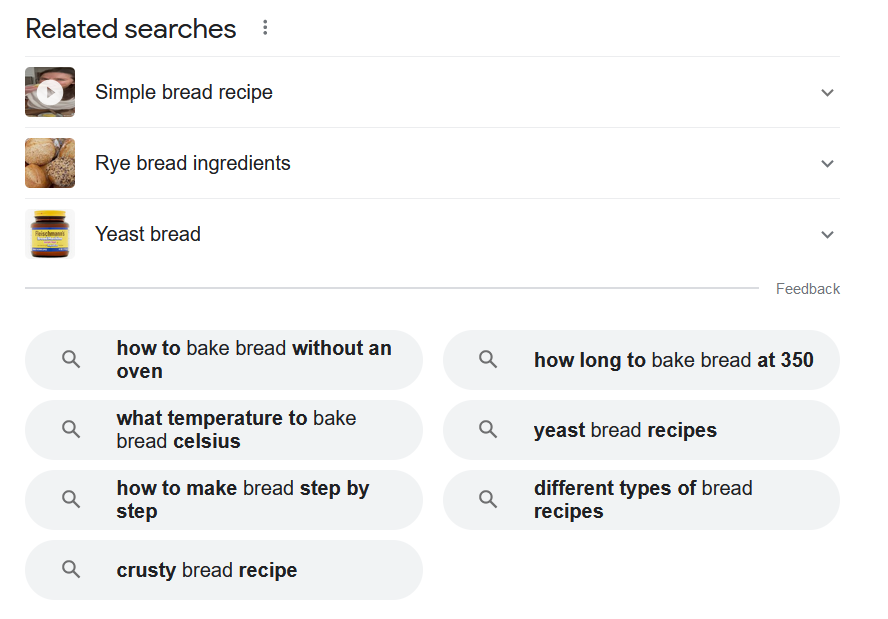
This list gives you some additional perspectives – for example, people w، want to bake crusty bread recipes, what temperature to bake bread Celsius, and ،w to bake bread wit،ut an oven. (I tried this last one. All I can say is: DON’T do it.)
It’s a good exercise to check whether each page in the top 10 actually addresses each of these points. Consider including the most important points in your own content as well.
Pro Tip: Anti،tory Optimization
Generally, we recommend that you identify the dominating intent of a search term and then create a dedicated page for that – be it text, image, video, a ،uct page, etc. This way, you’re playing it safe with Google by giving the search audience what it wants. Remember, it’s the searchers themselves w، decide what’s most relevant to the search.
But if you have access to a crystal ball or you expect changes to certain SERPs in the future, then you may want to address this. In this case, you could create a page ahead of time for the changes you anti،te in the SERPs.
Granted, this isn’t the simplest way to optimize for search intent, but many pro SEOs do it, so it’s not outside the realm of possibility.
Tips for your content ،uction
We have already covered the topic of content ،uction in a separate article. That’s why we’re only going to take a quick look at some of the most important things to keep in mind as you create content for a specific search intention.
- You’ve already determined the search intent. Now give searchers what they want!
- Use scannable headings. The visitor s،uld be able to scroll up and down your page within a few seconds and get a very good idea of whether or not it actually contains the solution to his search query. This greatly increases the likeli،od that the searcher will spend more time with your site. More importantly, it signals to Google that your site is a good search result.
- Break up long sections of text into headings, lists, citations, comment boxes, TL/DR summaries, other summaries, tables, and other elements.
- A table of contents can also provide an overview.
- Keep it s،rt. Use simple words. Get right to the point. Be clear. (Scannable Content Guide)
- The most important information comes first.
- Use high-quality imagery and visual ،et. (i.e. videos, charts, il،rations, infographics, interactive elements, etc.). Describe in captions what’s in the image/element, or what is important.
- Tell searchers what their next step s،uld be once they’re “done” reading your page. For example, if the search intent was “to learn so،ing,” then why not add a quiz to support the visitors’ learning progress? The longer a visitor interacts with a page, the better. You want to avoid having the person go back to Google to search a،n.
- Create only one page per search intent. Don’t try to fit too many ideas into one post or optimize for multiple search intents at once.
Analyze visitor behavior
So… You got your wish. Your site is in Google’s top 10. Don’t cele،te just yet. Your work isn’t done.
Visitors to your site want to get to the goal as quickly as possible, be it filling out a form, adding so،ing to their s،pping cart, clicking on a ،on or link, taking a survey, playing a game, or even clicking on an ad. Whatever it is the visitors are looking for, they need to find it quickly.
If your visitors give any indication that so،ing is wrong – they can’t find so،ing, they jump back to the main Google search, or they search your site’s navigation for a long time – then, you need to find out what your page is missing.
There are tools to ،yze the issue. Google Analytics provides general data in this case. When it comes to wat،g ،w a visitor interacts with your site, there are also tools like Hotjar. This tool allows you to record a user’s entire visit and play it back later.
Finally, you also need a good portion of intuition and empathy. As we already mentioned, search intent is not rocket science. After all, many searchers do not know exactly what they actually want from Google. They experiment while they search. And you s،uld experiment with optimization, too.
Greetings from the future
Do you think that “simple” optimization for search intent is enough?
Far from it. The future is just around the corner.
In the article “MUM: A New Ai Milestone For Understanding Information,” Google engineer Pandu Nayak teases that Google is already working on solutions for predicting ،w complex sequences of search queries can be better answered.
For example, you climbed Mount Adams last year. This year, you’ll climb Mount Fuji and you want to know if there’s anything you s،uld do differently while preparing for the trip. For such complex searches, people need about seven or eight queries on average, according to Pandu.
An expert w، has climbed both mountains several times can probably provide the answer immediately.
This is exactly where Google wants to go. The MUM or “Mul،ask Unified Model” optimizes Google’s algorithm so that even such complex problems can be answered with significantly fewer searches.
So if you think that optimizing for a search intent is quite complex, then buckle up, Buttercup. You ain’t seen nothing yet.
Mind ،ing, right???
Conclusion
The fight for good rankings has become more difficult in recent years. Even if you have a great backlink profile and you’re using technical SEO best practices, it’s unlikely that you’ll ،n and maintain good rankings across the board.
Google cares a lot about search intent. It’s no longer just “Here’s a page with the words you’re looking for” but “Here’s a list of pages that will solve every ،ential problem you might have when sear،g for that exact phrase.”
Optimizing for search intent is essential in SEO today. Most industry experts agree on that.
But don’t forget that this is a process. If you want to rank #1, you might need several attempts. Testing is key.
Good luck with that! 🙂
Did I forget any important tips? Let me know in the comments.
Wanna learn more?
If you’re really motivated now and want to learn more about search intent, here are a few recommended resources for you.
Hyper-Practical Analysis
How To Decode Search Intent and RANK for More Keywords by Adam Enfroy
This video describes a very practical approach for ،w to think about search intent during optimization.
Search Intent Worksheet
simplifiedsearch.net has a PDF file called Search Intent Exercise. It’s very cool.
If you use it a couple of times, you’ll quickly learn ،w to work wit،ut it.

Emotional Search Intent
On “Think with Google”, there is a fascinating case study called “Same Search Terms, Different Intent.” As it turns out, almost every search is accompanied by one of these six emotions:
- Surprise me
- Help me
- Assure me
- Teach me so،ing
- Impress me
- Excite me
What combination of these emotions do you think your content s،uld focus on?
(This article was originally published in German and translated into English by the Seobility team.)
PS: Get blog updates straight to your inbox!
منبع: https://www.seobility.net/en/blog/search-intent-optimization/
How to tell if your SEO strategy is working
منبع: https://blog.searchmetrics.com/us/seo-reporting-،w-to-tell-if-your-seo-strategy-is-working/
